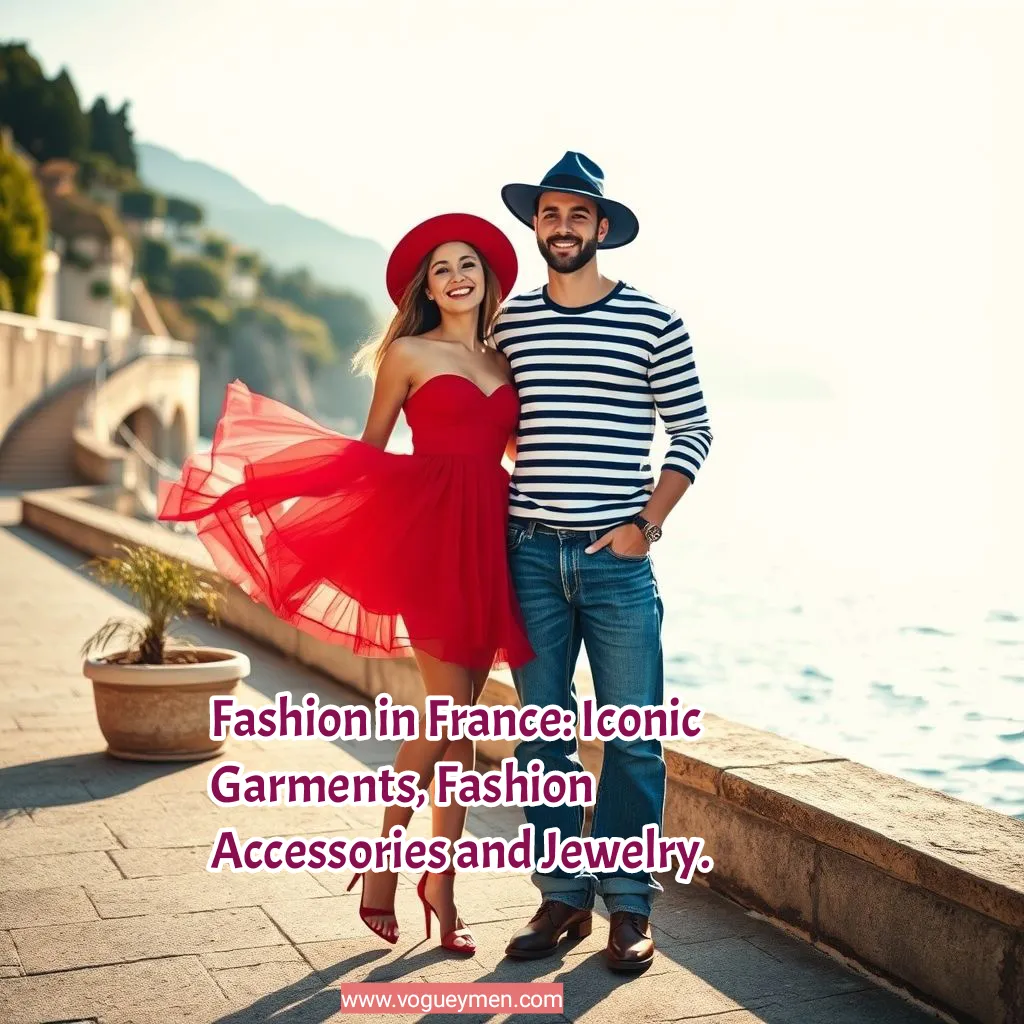France—the land of luxury and elegance, the birthplace of haute couture and the bikini—has shaped the very language of style. From Paris, the city of love and lights and a global capital of fashion, flows a legacy stitched in silken cravats and sculptural bijoux. France’s fashion is more than trend—it’s tradition and artistry. In this article, we explore iconic fashion accessories and traditional French garments and clothing that capture the essence of La Belle France. These are not mere brand-name icons, but giftable items and enduring styles that tell a story—rooted in heritage, refined with modern appeal. With each silhouette and stitch, France has contributed profoundly to the world’s sartorial heritage, inspiring generations across continents. Let’s begin.
Women’s garments that are quintessentially French:
From the structured charm of the Breton top to the romantic sweep of the chemise, traditional French garments for women are more than wardrobe staples—they’re cultural emblems. Fashion in France has gifted the world silhouettes that blend grace with rebellion, simplicity with sophistication. These timeless pieces—worn proudly in Parisian cafés and global catwalks alike—continue to shape feminine style. In this section, we explore iconic clothing rooted in France’s sartorial heritage and modern expression.
1. Robe à la Française
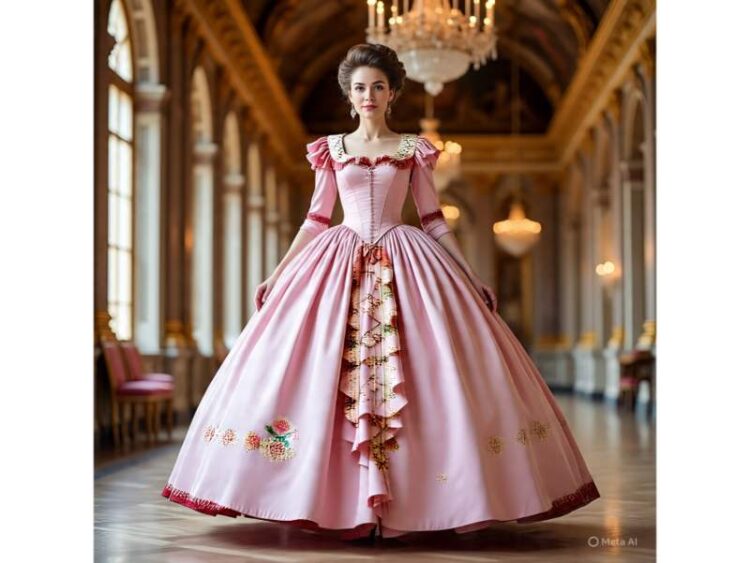
An 18th-century aristocratic gown, the robe à la Française features a fitted bodice, wide pannier-supported skirt, and signature back pleats (Watteau pleats) flowing from the shoulders. Typically made of silk brocade or taffeta, it was worn at court and formal events. Highly ornate, it embodied pre-Revolutionary French luxury. Though obsolete in modern wear, it remains iconic in costume design, historical reenactments, and haute couture reinterpretations celebrating France’s baroque fashion legacy.
2. Chemise Dress (inspired by Chemise à la Reine)
Inspired by Marie Antoinette’s 1780s Chemise à la Reine, this dress is a loose, gathered cotton or muslin gown, often cinched at the waist with a sash. Its light, flowing structure rejected stiff court dress and embraced pastoral simplicity. Once scandalous, it influenced post-Revolution neoclassical fashion. Modern chemise dresses, made from breathable natural fabrics, remain popular for summer wear, loungewear, and resort styles, praised for their elegance, comfort, and French roots in fashion liberation.
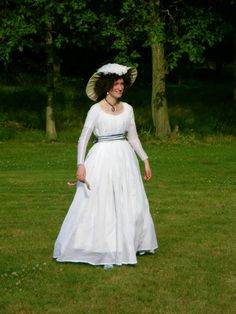
3. Wrap Dress (Robe Portefeuille)
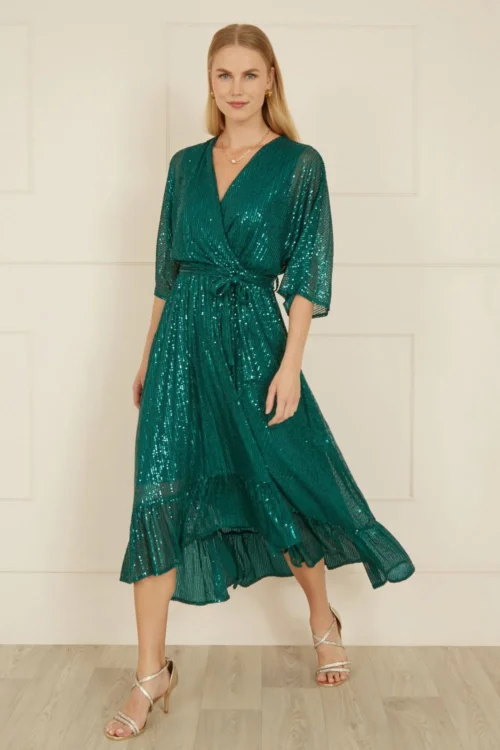
The wrap dress, or robe portefeuille, has a cross-over front tied at the waist, forming a flattering V-neckline and adjustable fit. Italian-born Elsa Schiaparelli, working in Paris in the 1930s, pioneered early wrap-style dresses before its 1970s revival. Made from jersey, silk, or cotton, it’s praised for versatility and ease. Today, it’s a wardrobe essential worldwide, embodying practical French chic—offering comfort, movement, and understated sophistication in both casual and formal contexts.
4. Bustier Dress
The bustier dress is a strapless, body-hugging garment constructed with boning or structured cups to support the bust and define the waist. Derived from French corsetry traditions, it became popular in mid-20th-century Parisian fashion. Made from satin, silk, or modern stretch fabrics, it’s used in formalwear, party dresses, and bridal designs. Today, it remains a staple in evening fashion, balancing structure and sensuality, and reflecting the French legacy of feminine, form-conscious design.

5. Robe de Style
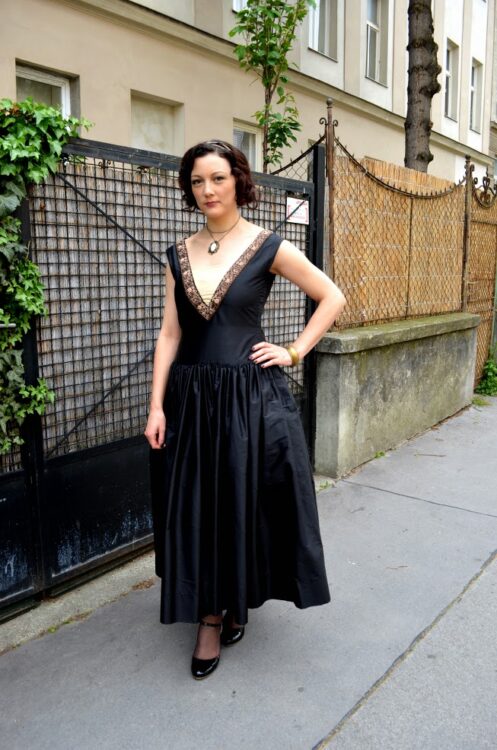
The Robe de Style is a 1920s French evening dress designed by Jeanne Lanvin, combining a fitted bodice and wide, panniered skirt. Made from silk taffeta, lace, or organza, it evoked 18th-century femininity in contrast to the era’s straight flapper silhouettes. Worn at galas and soirées, it offered elegance and volume without rigidity. Though rare today, it occasionally resurfaces in bridal or couture collections, representing the romantic and historical depth of French design.
Image source: The Purple Dress
6. Culottes
Culottes are wide-legged trousers designed to resemble a skirt, offering modesty with freedom of movement. Originating in 18th-century France as men’s breeches, they were redefined in the early 20th century for women’s sports and daily wear. Often made of cotton, linen, or wool, culottes became symbolic of feminist dress reform in France. Today, they’re seen in fashion-forward workwear, travel outfits, and minimalist styling, proving both functional and stylish across seasons and generations.
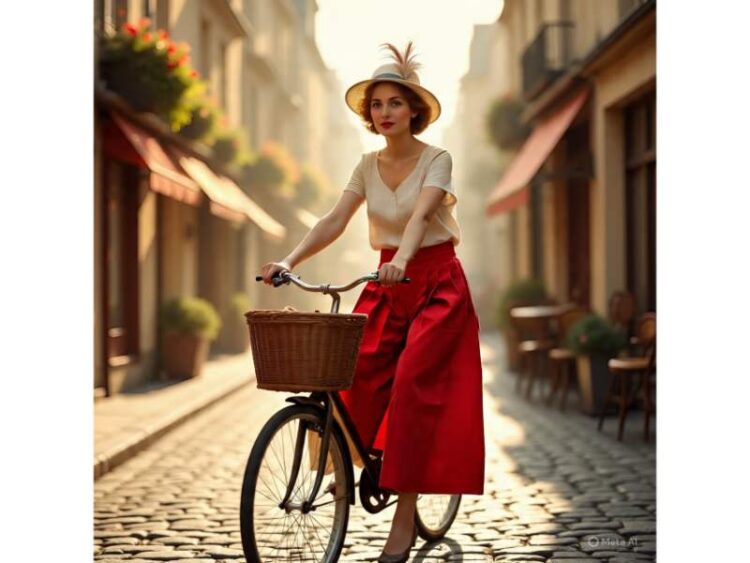
7. Robe Paysanne (Peasant Dress)
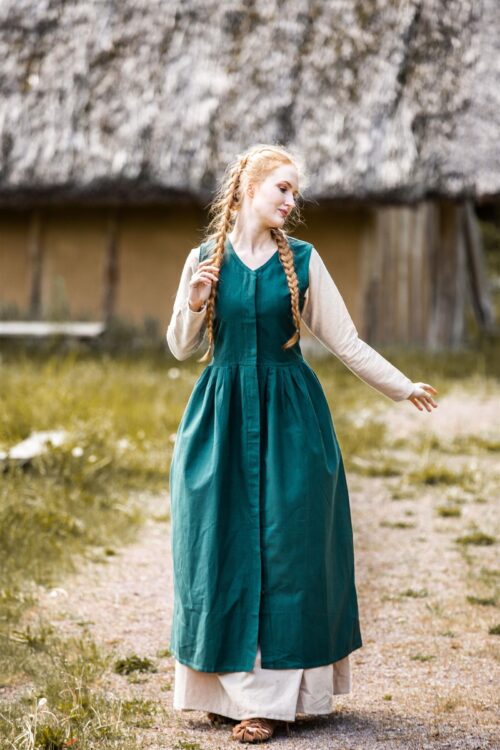
The robe paysanne is a folk-style dress traditionally worn by rural French women, featuring a full gathered skirt, fitted or laced bodice, and simple cotton or linen fabrics in earthy or floral prints. Functional for daily labor, it reflected modesty and local identity. Later romanticized in upper-class fashion and art, it inspired bohemian and cottagecore trends. Modern versions retain its rustic charm and are worn in festivals, vintage styling, and as nostalgic nods to France’s agrarian past. Image source
8. Little Black Dress (La Petite Robe Noire)
A knee-length black dress with clean lines, typically made of silk, wool crepe, or satin, designed for versatility and minimalism. Introduced by Coco Chanel in 1926, it defied ornate fashion and became a symbol of modern elegance. Meant for both casual and formal wear, it adapts easily with accessories. Still essential in wardrobes worldwide, the little black dress represents the timeless chic of French fashion—subtle, stylish, and endlessly reinvented through the decades.
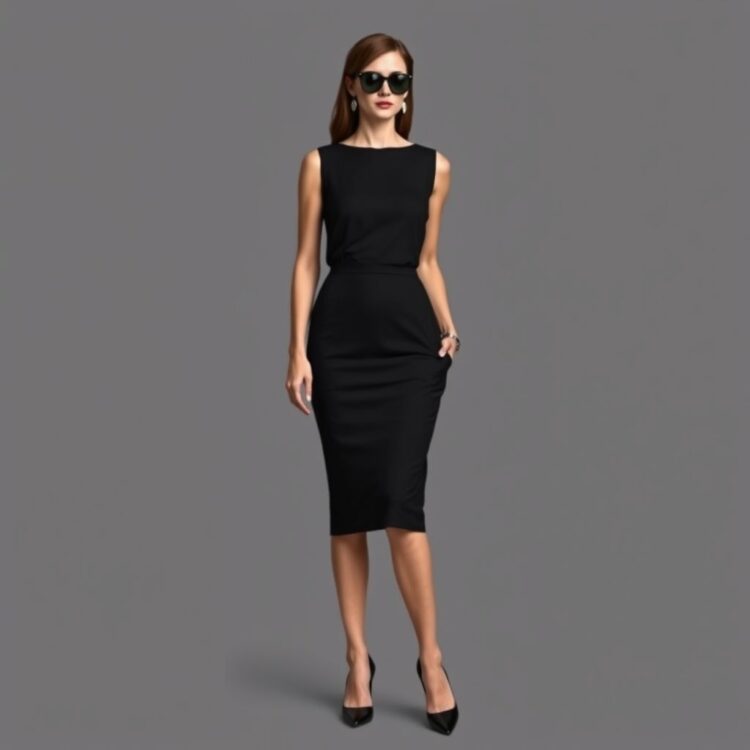
9. Breton Blouse (Marinière)
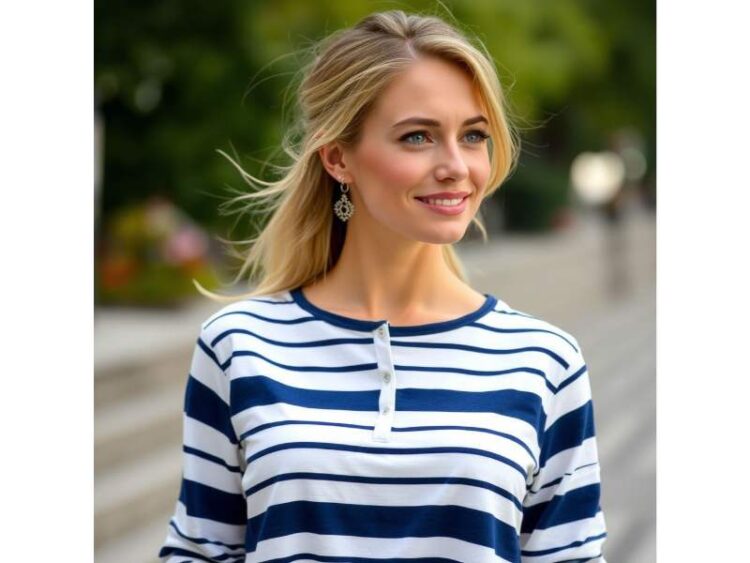
Originally a French Navy uniform from 1858, the marinière is a long-sleeved cotton jersey shirt with navy-and-white horizontal stripes and a boat neckline. Made of soft, breathable cotton, it was adopted by Coco Chanel in the 1910s as part of relaxed women’s daywear. Worn by artists and icons like Picasso and Brigitte Bardot, it evolved into a unisex staple of French casual style, still beloved today for its nautical charm and understated Parisian cool.
10. Flared Midi Skirt
A calf-length, wide-flaring skirt, usually made of cotton, wool, or chiffon, designed to create a soft hourglass silhouette. Inspired by Christian Dior’s “New Look” of 1947, it reintroduced femininity after wartime austerity. Flattering and fluid, it’s worn for both everyday and semi-formal occasions, often styled with tucked blouses or cropped jackets. A favorite in Parisian chic wardrobes, the flared midi skirt continues to embody elegance, movement, and vintage-inspired sophistication in contemporary fashion.
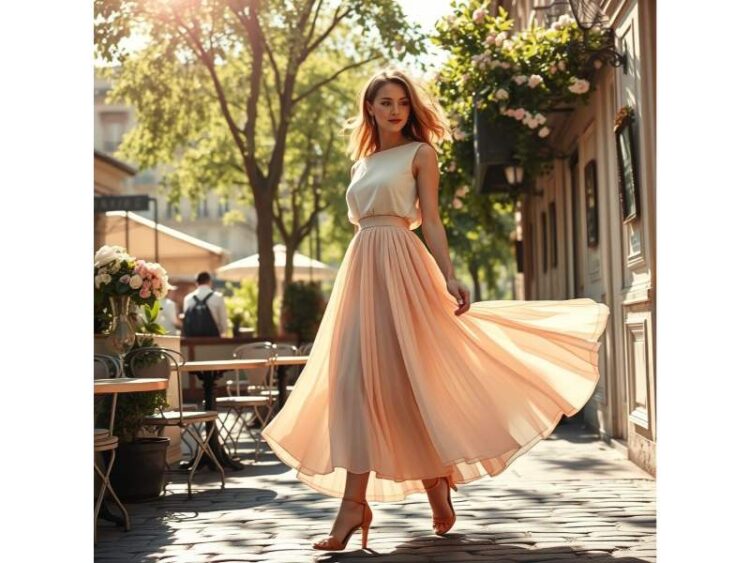
11. Robe Trapèze (Trapeze Dress)
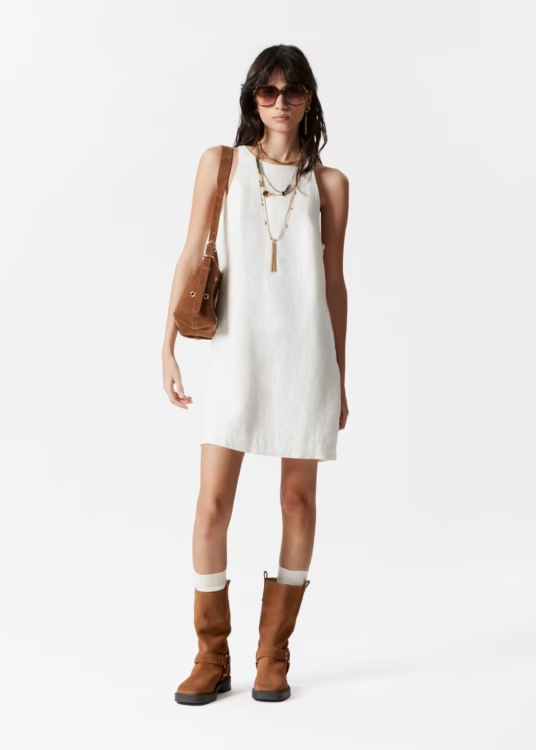
The trapeze dress is a loose, A-line garment that flares outward from the shoulders, skimming the body without a defined waist. Introduced by Yves Saint Laurent for Dior in 1958, it revolutionized women’s silhouettes with its free-flowing structure. Made from cotton, crepe, or silk, it offered both style and ease. Once a staple of 1960s French modernism, it remains a go-to for effortless elegance, especially in summer wardrobes and minimalist couture collections.
12. Tulle Dress
A tulle dress features layers of fine netting fabric, creating volume without weight and an airy, romantic effect. Used in ballet tutus, bridal gowns, and couture evening wear, it became popular through French designers like Christian Dior, who sculpted dreamlike silhouettes from the material. Worn for special occasions, it evokes fantasy and femininity. Modern tulle dresses mix classic softness with avant-garde drama, making it a staple in high fashion and ethereal formalwear.
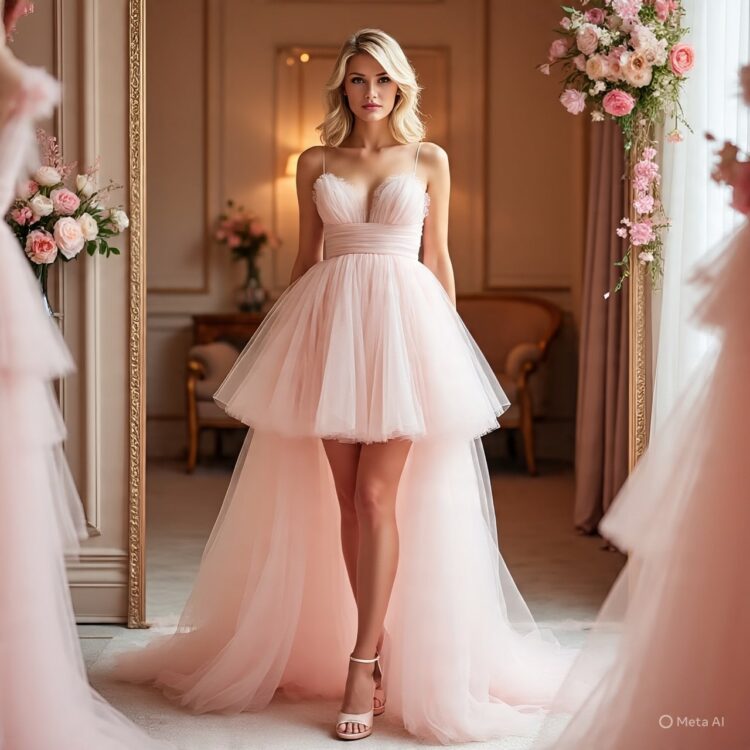
13. The Chanel Suit
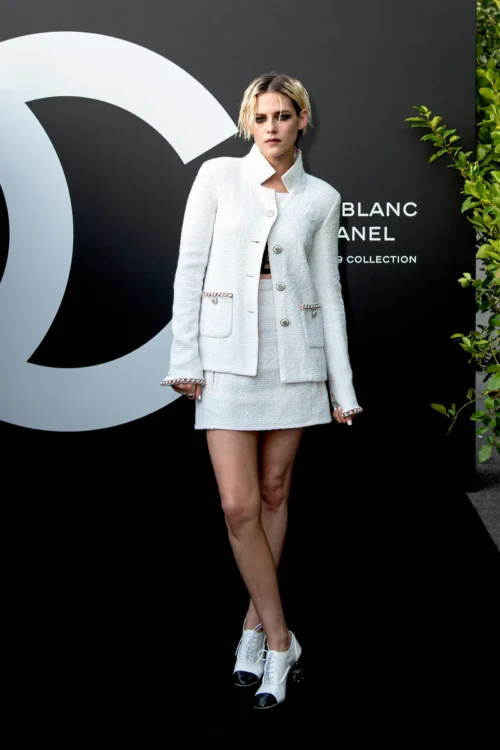
A structured yet soft two-piece ensemble, the Chanel suit includes a collarless tweed jacket with braid trim and a slim knee-length skirt. Created by Gabrielle Chanel in the 1920s, it redefined women’s suiting by blending comfort and elegance. Made from tweed, wool, or boucle, it was designed for modern, mobile women. Still emblematic of French luxury and professionalism, the Chanel suit endures in couture and ready-to-wear lines, influencing women’s workwear globally. image source vogue.com
14. Le Smoking (Women’s Tuxedo)
Le Smoking is a tailored women’s tuxedo, composed of a fitted blazer with satin lapels and matching slim trousers, introduced by Yves Saint Laurent in 1966. Usually made from wool, velvet, or crepe, it was radical in giving women access to masculine eveningwear with elegance. Worn for galas, fashion events, or edgy formalwear, it challenged gender norms. Today, it remains an icon of power dressing and French haute couture rebellion with timeless allure. image source
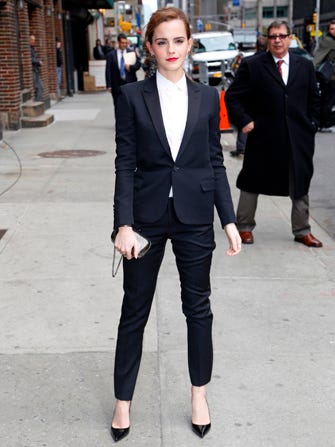
15. Peignoir
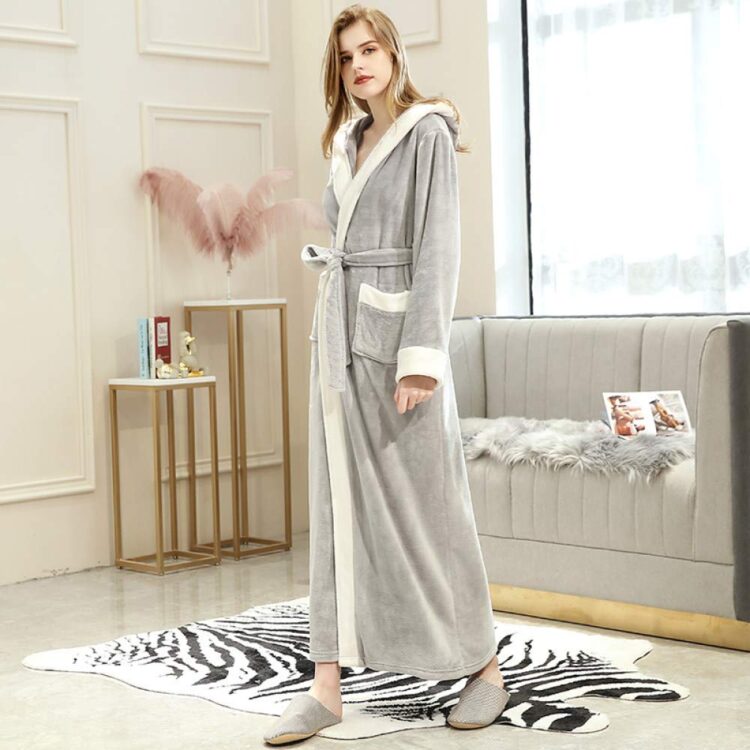
The peignoir is a long, flowing robe, traditionally worn over nightgowns, made of sheer silk, chiffon, or lace with delicate trims or embroidery. Originating in 18th-century France, it began as an elegant post-bath or dressing-room garment. In the 20th century, it gained popularity as boudoir loungewear, synonymous with feminine luxury. Today, peignoirs appear in bridal lingerie, vintage fashion, and luxury sleepwear, blending nostalgia with sensual refinement rooted in French domestic elegance.
16. Empire Waist Dress
Characterized by a high waistline just below the bust, the Empire dress flows into a long, gathered skirt, often made of muslin, silk, or cotton voile. Popular in Napoleonic France, it drew from Greco-Roman art and marked a shift from heavy court dress to graceful minimalism. Worn today for weddings, evening wear, and maternity fashion, it flatters many body types and maintains its place as a romantic, historically-inspired icon of French neoclassical elegance.
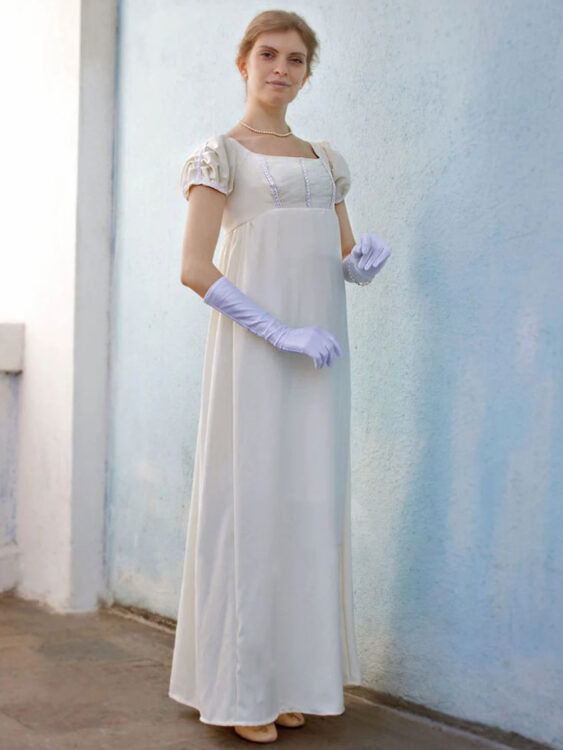
17. The robe alsacienne
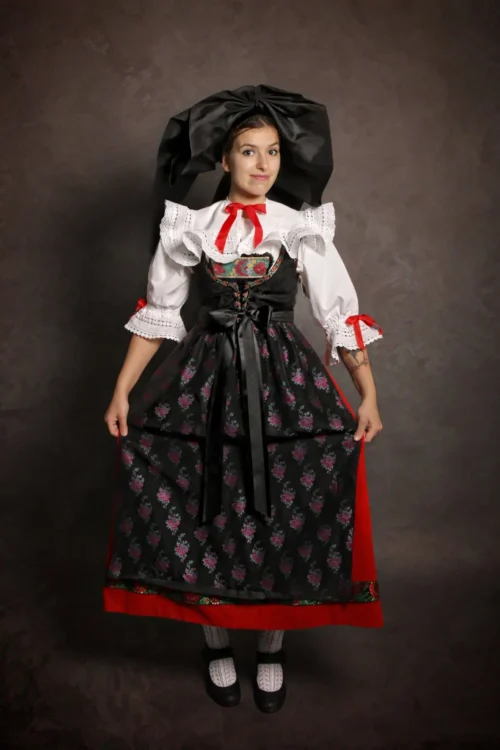
The robe alsacienne is a traditional women’s dress from Alsace, northeastern France, renowned for its dramatic oversized bow headdress (grand nœud), often in black or red silk. The outfit includes a dark, full pleated skirt, embroidered or velvet bodice, white blouse, and lace-trimmed apron. Typically made of cotton, silk, and wool, it was worn on Sundays and festivals. Rooted in 19th-century regional identity, it remains one of France’s most iconic folk costumes, still seen in cultural parades and heritage events.
18. The tutu skirt
The tutu skirt is a structured, multi-layered skirt made from fine tulle or netting, originally created for ballet performances in 19th-century Paris. Designed to showcase the dancer’s footwork and grace, it typically features a fitted waistband and a short, voluminous silhouette that flares outward. Variations range from romantic, calf-length tutus to stiff, classical styles. Though rooted in performance, the tutu has transcended the stage, influencing runway fashion, pop culture, and bridal couture as a symbol of femininity, fantasy, and French artistic legacy.
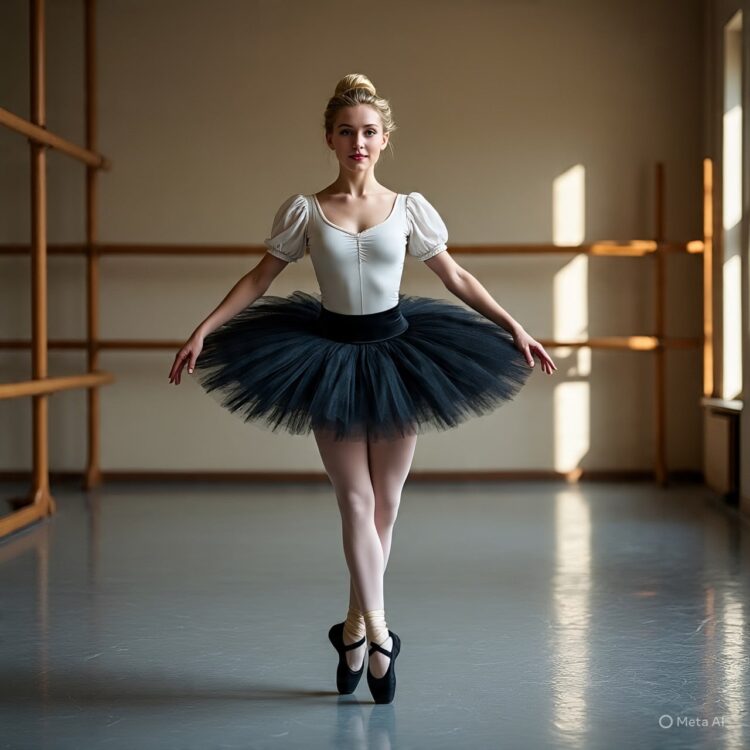
The robe manteau
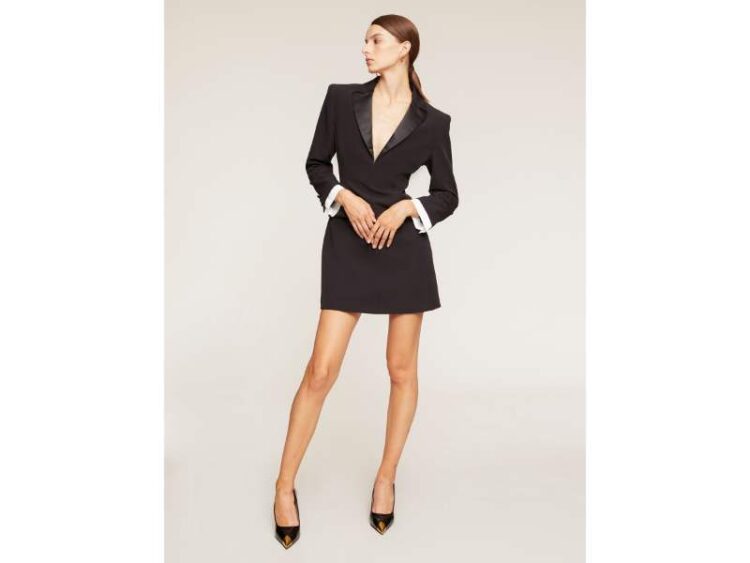
The robe manteau, or coat dress, is a tailored garment that combines the structure of a coat with the elegance of a dress. Originating in mid-20th-century French couture, it typically features a fitted bodice, buttoned front, lapels, and a flared or straight skirt. Made from wool, silk, or heavy crepe, it offers polish and practicality. Popularized by designers like Dior and Balenciaga, the robe manteau remains a timeless option for formal daytime events, embodying refined Parisian sophistication.
19. The Lingerie
French lingerie includes intricately designed bras, slips, and corsets, crafted from lace, silk, or satin, and revered for combining sensuality with craftsmanship. With roots in 19th-century Parisian corset-making, it evolved into a global benchmark of elegance. Brands like Chantelle, Simone Pérèle, and Aubade elevated intimate apparel into an art form. Today, it’s worn for both everyday confidence and special occasions, representing France’s enduring mastery of feminine design, comfort, and romantic sophistication.
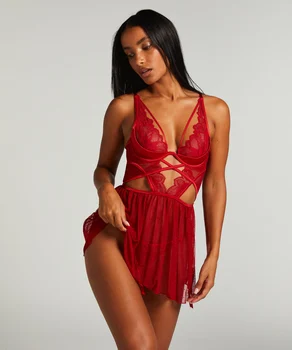
20. The Bikini

Invented in France by Louis Réard in 1946, the bikini is a two-piece swimsuit made from nylon, Lycra, or polyester, consisting of a bra top and briefs. Initially scandalous, it gained acceptance in the 1950s through film stars like Brigitte Bardot. Now available in countless styles—triangle, bandeau, high-waisted—it’s worn for beachwear, poolside fashion, and sunbathing. The bikini remains a symbol of freedom, body confidence, and French innovation in postwar leisure culture.
Men’s Garments:
Let’s now explore classic men’s garments with French origins. France has long influenced men’s fashion through timeless pieces known for elegance, structure, and style. These garments were first worn in French cafés, streets, and salons, and have since gained international recognition. In this section, we highlight the iconic clothing items that started in France and continue to inspire how men dress around the world.
1. Marinière (Breton Striped Shirt)
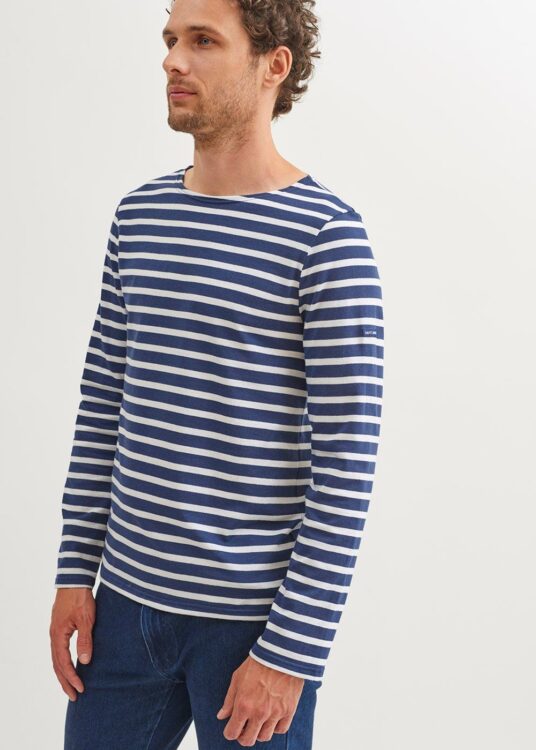
A cotton jersey shirt with navy and white stripes, originally worn by French sailors in 1858. Designed to be visible at sea, it was later embraced by Coco Chanel and Jean-Paul Gaultier, making it a symbol of effortless French chic. Typically features a boat neckline and three-quarter sleeves.
2. Paletot Coat (Pronounced: pah-luh-toh)
A knee-length, straight-cut overcoat, traditionally made from wool or cashmere. Introduced in 19th-century France, it has a boxy silhouette, no waist seam, and a double-breasted or single-breasted closure. A favorite of French gentlemen, it remains a refined outerwear piece.
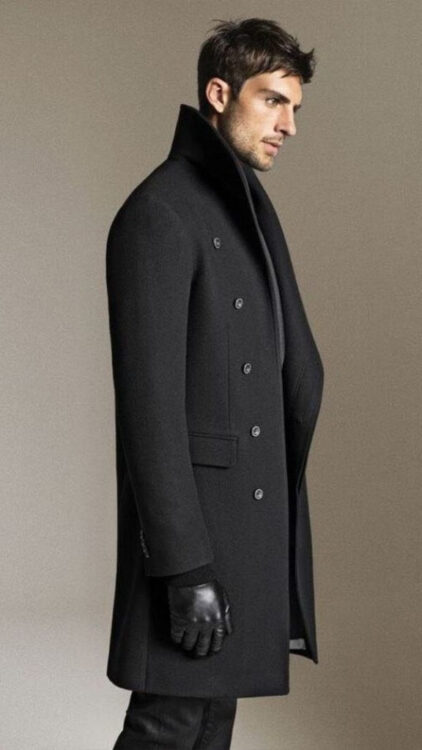
3. Gilet de Berger (Shepherd’s Vest)
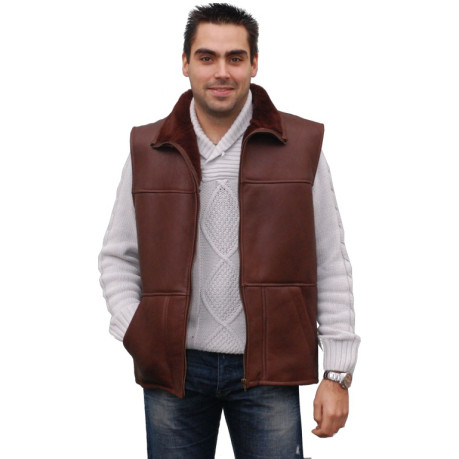
The gilet de berger is a sleeveless wool vest traditionally worn by French shepherds, especially in rural regions like Auvergne or the Pyrenees. Made from thick sheepskin or felted wool, it provides insulation, durability, and freedom of movement. The cut is typically straight and roomy, often featuring patch pockets and natural tones like grey, cream, or brown. Once purely utilitarian, the gilet de berger has been revived in rustic chic and outdoor-inspired fashion, blending heritage function with timeless French charm.
4. Bleu de Travail (French Work Jacket)
A boxy, utilitarian jacket made from durable cotton twill or moleskin, originally worn by French laborers in the late 19th century. Its deep pockets and indigo-blue color made it practical. Now a streetwear staple, it’s loved for its rugged yet minimalist aesthetic.
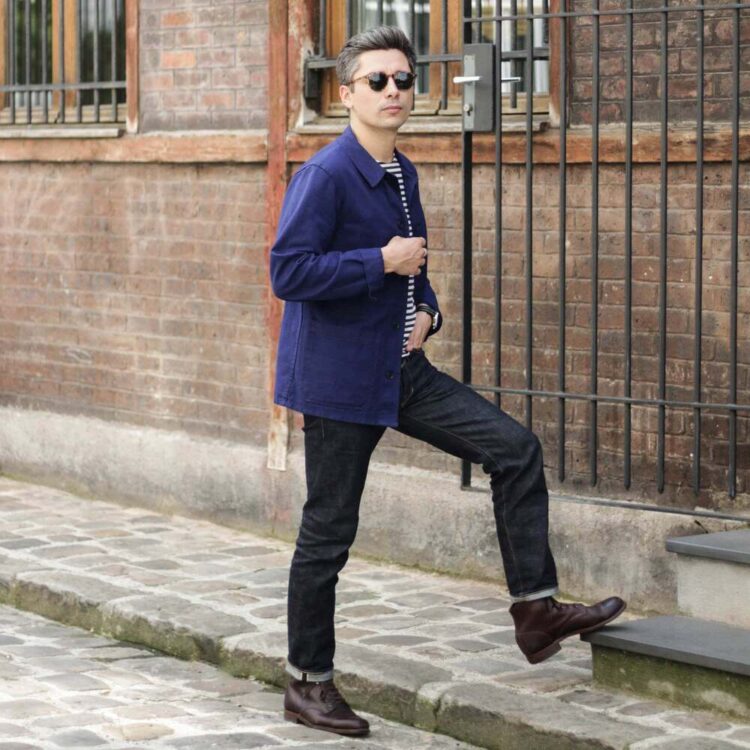
5. French Cuff/Double Cuff Shirt
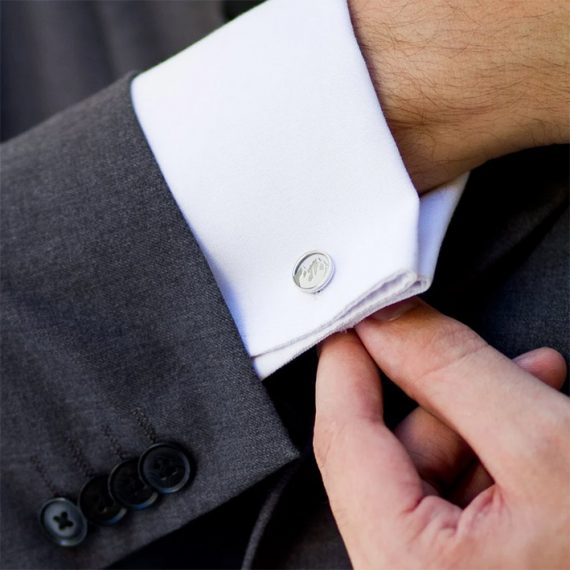
A dress shirt with long, folded-back cuffs fastened with cufflinks, first popularized by French aristocrats in the 16th century. The extra length adds elegance, making it a staple of formalwear, favored by businessmen and style icons worldwide.
6. Sarouel (Harem Pants) or Pantalon Bouffant:
Loose, billowy trousers with a low crotch and tapered ankles, inspired by traditional North African attire but adapted by French fashion in the 19th century. Made from linen, silk, or cotton, they were worn by bohemians and avant-garde designers, now a modern streetwear favorite.
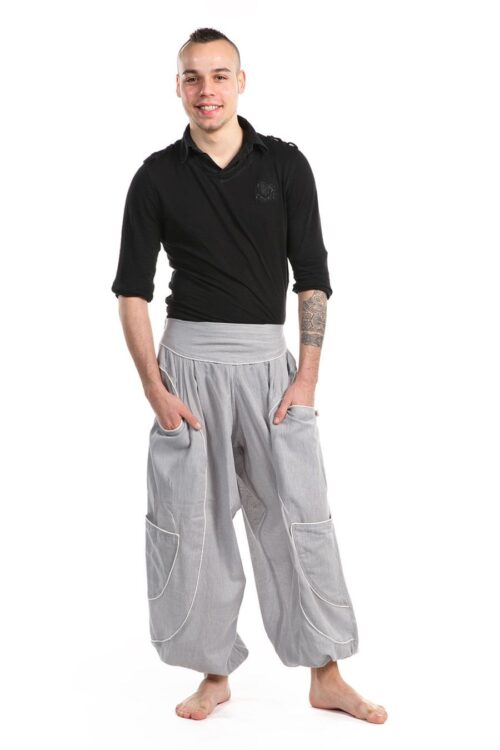
7. French Pea Coat (Caban)

The caban, or French pea coat, is a short, double-breasted wool coat with wide lapels, anchor-embossed buttons, and a structured silhouette. Originating in the French Navy, it was designed to shield sailors from harsh sea winds, using dense navy wool for warmth and water resistance. Its military roots and timeless cut made it a staple of civilian outerwear in France and beyond. Today, the caban remains a symbol of nautical elegance, favored for its versatility and understated strength.
8. Chasseur jacket:
The chasseur jacket originated as a French military garment worn by light infantry troops called chasseurs. It is a short, fitted jacket designed for mobility, often featuring side vents or slits and a tailored waist that creates a bloused effect. Traditionally made from sturdy wool or mohair wool tweed, it balances durability with comfort. Historically, it served practical purposes in 19th-century French mountain and light infantry units, evolving into a stylish, elegant piece in modern fashion, exemplified by luxury versions like the CELINE chasseur jacket. image source
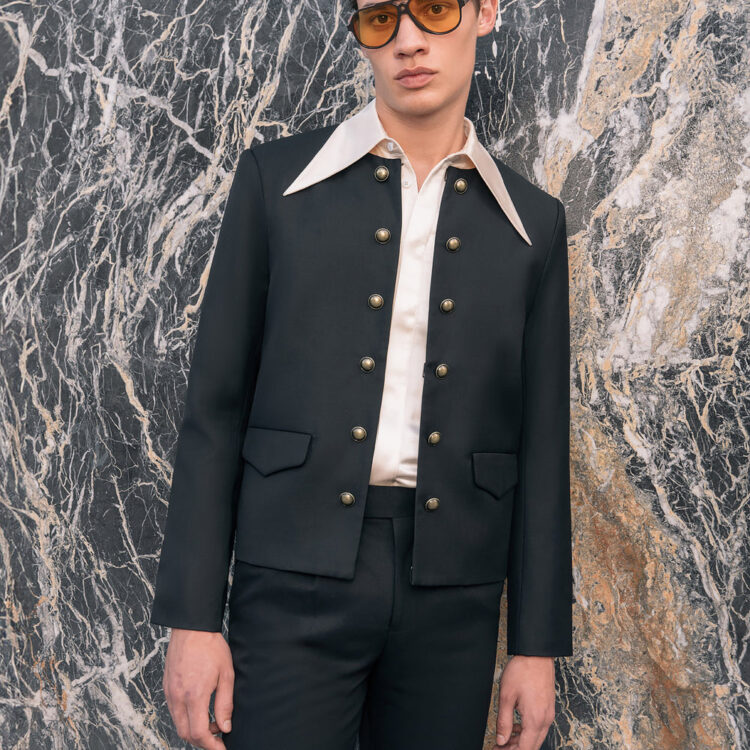
9. Vichy Shirt (Chemise en Vichy)
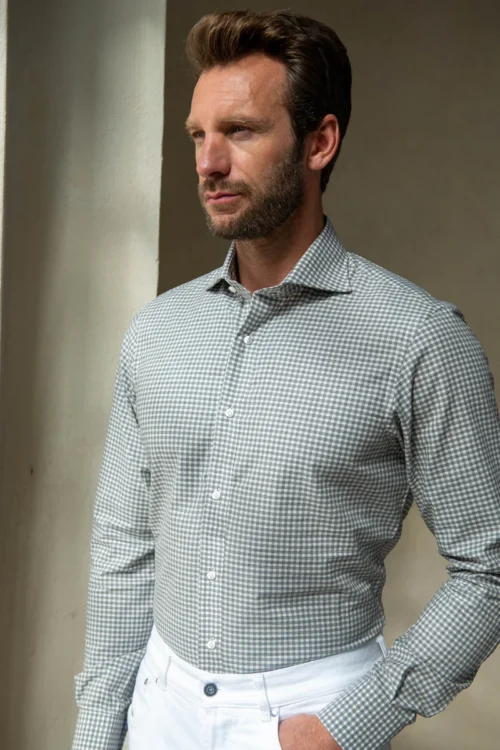
The Vichy shirt is a button-up shirt made from lightweight Vichy fabric, featuring small gingham checks in white and contrasting colors (often blue or red). Named after Vichy, France, where the cotton fabric gained popularity in the 19th century, it became a mid-century staple in French summer style. Worn by both men and women, it’s typically short-sleeved and crisp, exuding effortless charm. Today, it remains a go-to for casual French Riviera fashion.
See Also:
Beyond the grand brands: Italy’s traditional fashion revisited……..
Fashion accessories and footwear specialties from France
Now we turn our gaze to the elegant companions of French style—fashion accessories that have adorned both men and women across centuries. From berets and silk scarves to the unmistakable charm of the pochettes and cravat pins, France’s contribution to sartorial heritage extends far beyond clothing. These accessories, born of tradition or invented in French ateliers, reflect a genius for detail that feels both personal and profound. Here begins the story of timeless flair.
1. Boutonnière

A small floral arrangement, typically a single flower like a rose or carnation, pinned to a jacket lapel, often accented with greenery or ribbon. Crafted from fresh or silk flowers, its refined, understated aesthetic is primarily for men, though unisex in modern fashion, worn at formal events like weddings or galas. Originating in 19th-century France, it symbolizes elegance and chivalry, a haute couture accent for tailored suits. Its delicate design influences global menswear trends, adding a touch of French sophistication. A boutonnière is a charming gift for those valuing classic, event-ready style. France’s fashion
Coiffe
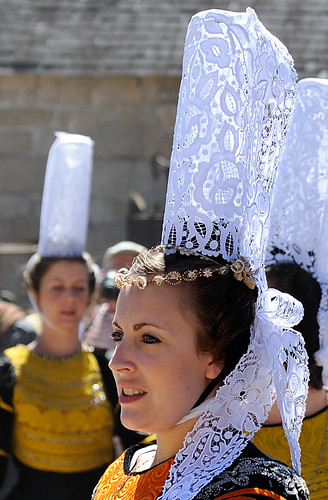
A traditional headdress, often a lacy or embroidered cap with ruffles or ribbons, shaped to frame the face or cover hair. Made of cotton, linen, or lace, its delicate, regional aesthetic varies (e.g., Brittany’s tall, starched versions). Primarily worn by women for cultural or ceremonial events, it reflects rural French identity. In haute couture, coiffes inspire avant-garde headpieces, showcasing France’s folk heritage. Their intricate craftsmanship influences modern millinery, symbolizing tradition and pride, making them a unique accessory for those celebrating French provincial culture or historical reenactments.
Fichu
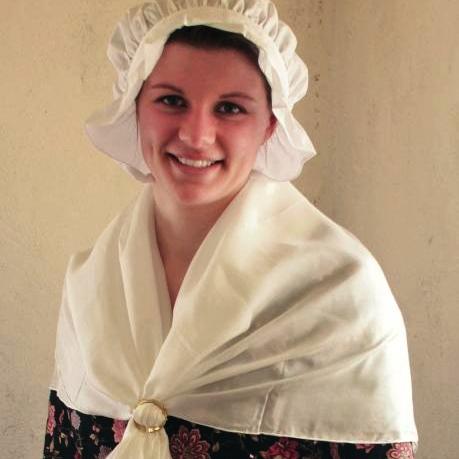
A triangular scarf or shawl, draped over shoulders or tucked into a bodice, crafted from muslin, lace, or silk with delicate embroidery. Its soft, feminine aesthetic suits women, evoking 18th-century Rococo elegance. Worn for modesty or adornment in French courts, it’s a haute couture accent, reimagined in sheer fabrics. The fichu’s romantic charm influences modern shawls, reflecting France’s historical fashion finesse. Versatile for casual or formal wear, it’s a sentimental gift for those who cherish vintage-inspired, lightweight accessories with a distinctly French flair. Image source
Cocktail Hat
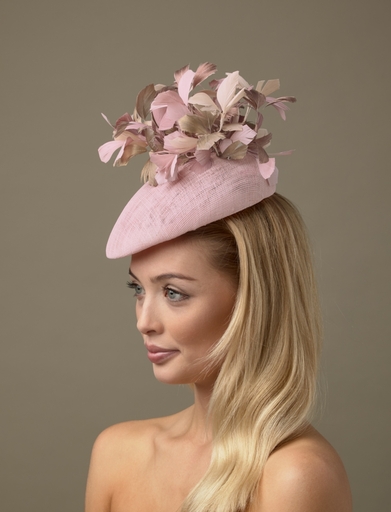
A small, ornate headpiece, often perched at an angle, featuring feathers, veils, or jewels, crafted from felt, silk, or satin. Its bold, glamorous aesthetic is primarily for women at semi-formal events. Emerging in 20th-century France for cocktail parties, it’s a haute couture favorite, showcasing French millinery artistry. Its dramatic flair influences modern fascinators, adding sophistication to eveningwear. Worn for its eye-catching charm, the cocktail hat is a chic gift for those who love statement accessories with a nod to French social elegance.
Kepi Cap
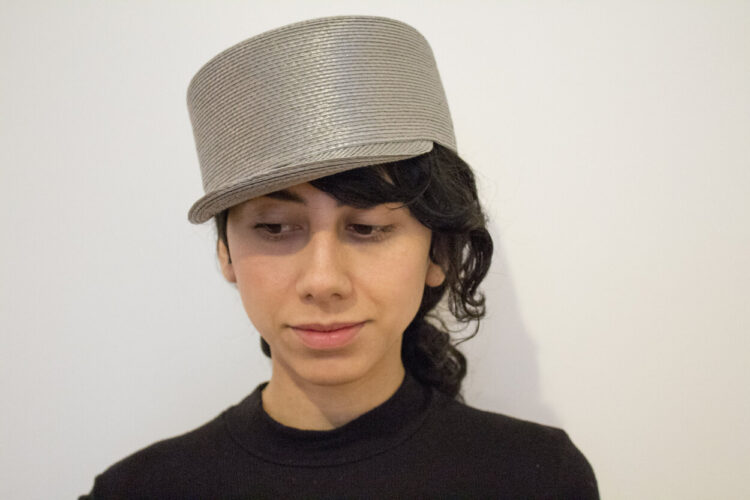
A flat-topped, visored military cap with a stiff, round crown, often adorned with braid or insignia, made of wool or cotton. Its structured, authoritative aesthetic suits primarily men, historically soldiers, but unisex in modern fashion. Originating in 19th-century French military uniforms, it’s a haute couture accent for avant-garde looks. Its disciplined design influences contemporary headwear, symbolizing French martial heritage. Worn for historical reenactments or bold styling, the kepi is a unique gift for those who value heritage-driven, statement-making accessories.
Foulard
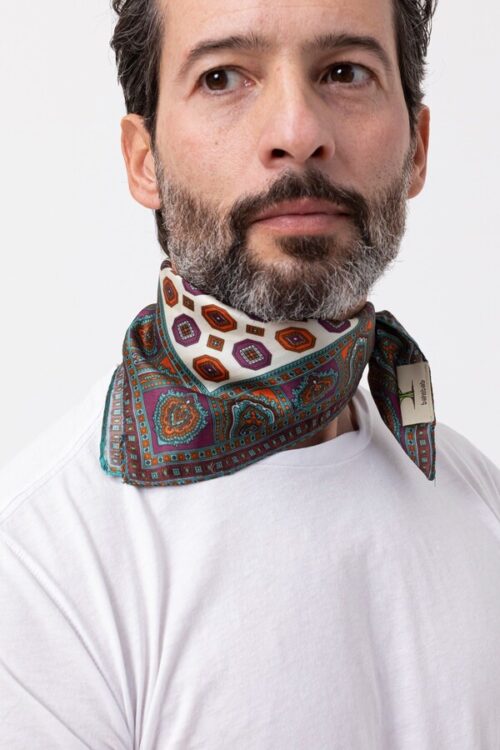
A lightweight, square silk scarf, often hand-painted or printed with florals or paisleys, tied around the neck, head, or handbag. Its versatile, elegant aesthetic suits unisex wearers, embodying Parisian chic. Originating in 19th-century France via Lyon’s silk trade, it’s a haute couture staple for refined accents. Its fluid design influences global scarf trends, blending practicality with luxury. Worn for casual or formal looks, the foulard is a timeless gift for those who cherish adaptable, sophisticated French accessories with cultural roots.
Pouf Ornamental Pouch
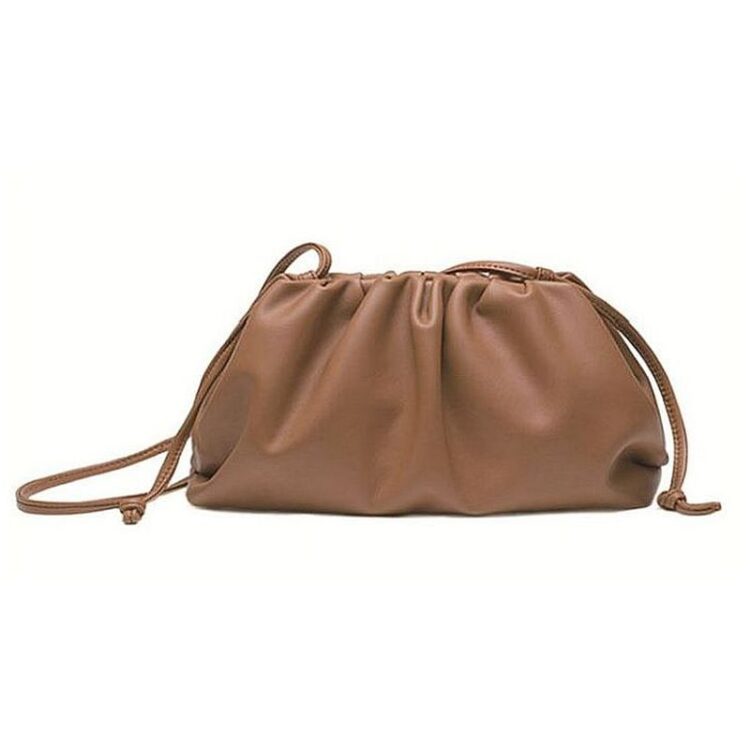
A small, decorative pouch, often oval or round, suspended from a waistband with embroidery, beads, or tassels, crafted from satin or velvet. Its ornate, Renaissance-inspired aesthetic is primarily for women, adding historical flair. Popular in 16th-century French courts, it’s a haute couture accent for period-inspired gowns. Its intricate design influences modern evening bags, showcasing French artistry. Worn for formal or costume events, the pouf is a charming gift for those who love unique, heritage-rich accessories with a touch of opulence.
Canotier Hat
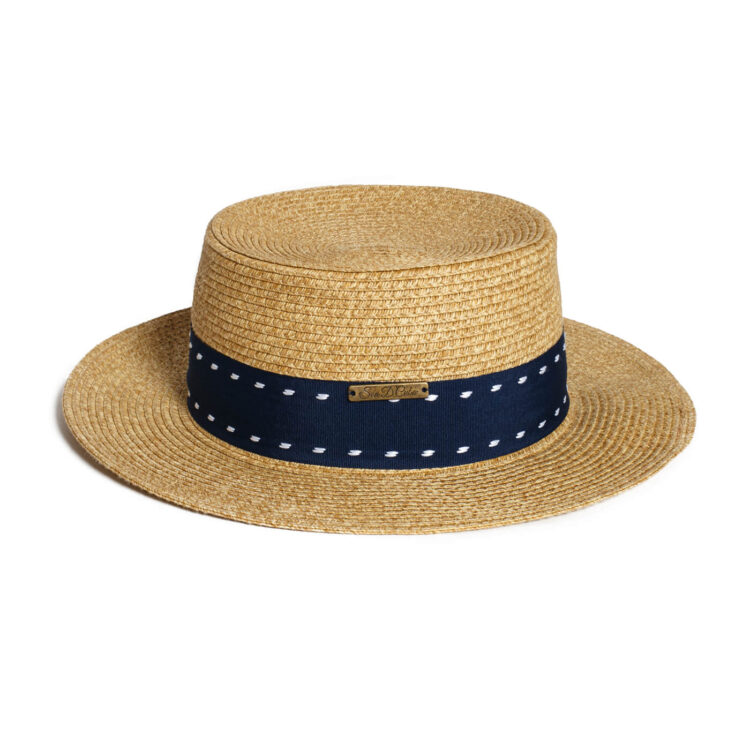
A flat-crowned, stiff-brimmed straw hat, often round or oval, adorned with a grosgrain ribbon band. Crafted from woven straw, its crisp, summery aesthetic suits unisex wearers for outdoor events like boating or picnics. Originating in 19th-century France, worn by Seine boaters, it embodies Parisian leisure. A haute couture staple, it influences global straw hat trends with its chic simplicity. Worn for casual elegance, the canotier is a stylish gift for those cherishing French sophistication and heritage.
Pochette
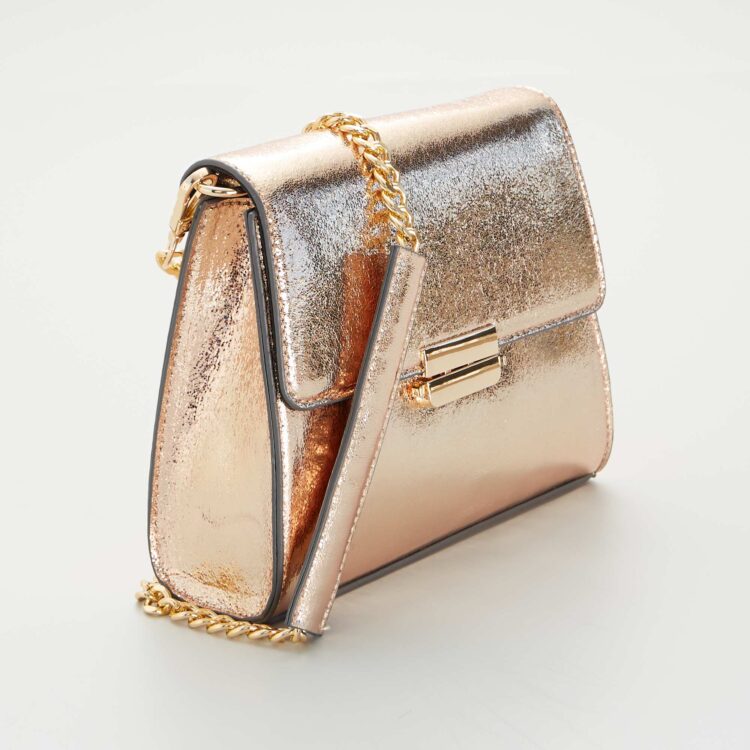
A pochette is a small, flat pouch or clutch-style bag, often rectangular, crafted from leather, canvas, or silk. Designed to hold essentials like cards or cosmetics, it’s handheld or slipped inside a larger tote. Minimalist yet elegant, pochettes are unisex—equally popular as evening clutches or pocket organizers, depending on design. Its sleek silhouette makes it a refined companion for formal or casual outings.
Cravat Pin
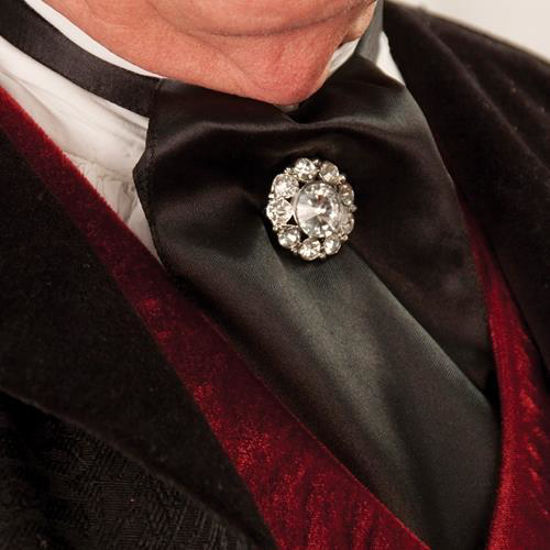
A cravat pin is a slim, pointed accessory—like a miniature stick pin—used to fasten a cravat, ascot, or decorative neckwear. Typically crafted from polished metal, sometimes embellished with stones or filigree, it pierces the fabric to secure folds in place. Worn through shirtfronts or cravat knots, it’s traditionally masculine but embraced by anyone channeling vintage or dandy style. It’s more ornament than necessity, adding quiet flamboyance to tailored attire.
Minaudière
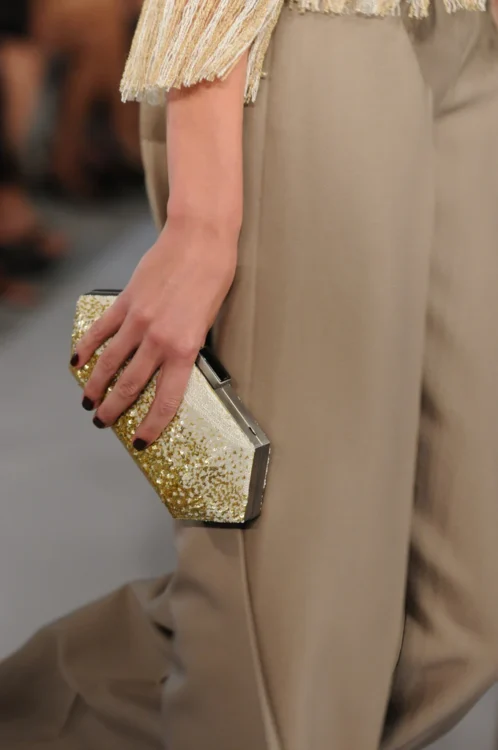
A minaudière is a small, rigid evening clutch, often box-shaped and made from luxe materials like metal, crystal, enamel, or satin. It features a clasp closure and may include interior compartments or mirrors. Designed to carry tiny essentials—lipstick, keys, compact—it’s primarily feminine, used with formal wear. Its jeweled appearance makes it both handbag and statement accessory, turning a functional item into a glittering centerpiece of elegance. image source
Fashion Parasol
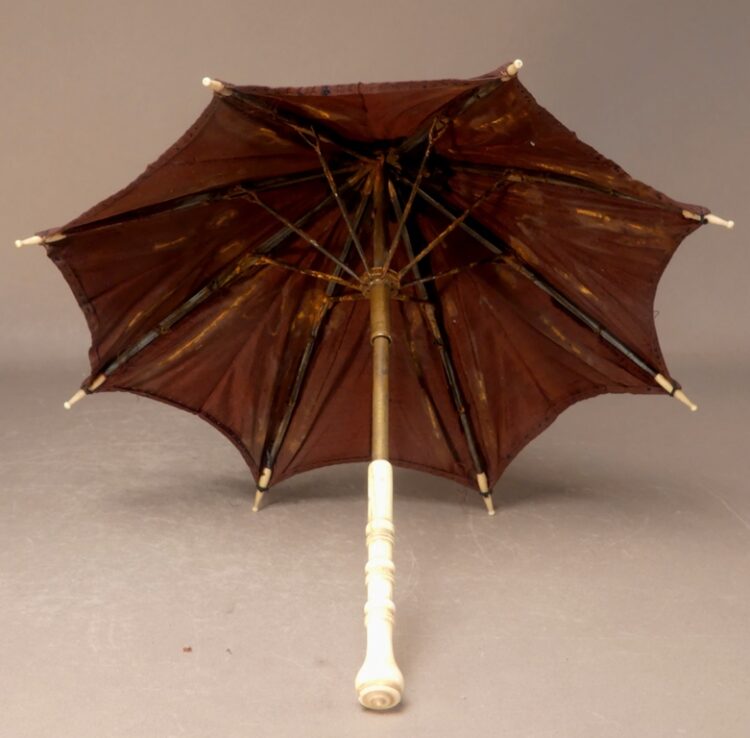
A symbol of 18th-century French elegance, the fashion parasol was more than sun protection—it was a flirtatious flourish. Crafted from lace, silk, or carved wood, it complemented promenades and garden parties. Often matched to gowns, it became a canvas for embroidery and coquetry. French parasols tilted for dramatic effect, embodying charm and status in aristocratic circles, especially among women of Versailles and Parisian salons.
Breton Cap
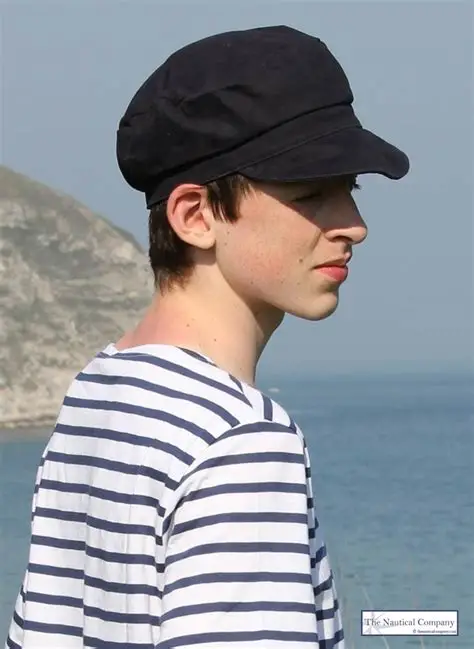
Rooted in Brittany’s maritime heritage, the Breton cap is a sturdy canvas headpiece worn by sailors, farmers, and later, style icons. Its flat crown and short brim evoke nautical grit, while its adoption by Nouvelle Vague artists and Swinging London gave it a rebellious edge. Today, it’s a unisex staple in French fashion—paired with striped shirts or tailored coats for a touch of coastal cool.
Chantilly Lace Fan
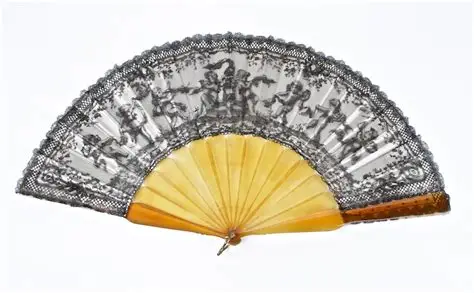
Delicate and dramatic, the Chantilly lace fan epitomizes French romanticism. Originating in the town of Chantilly, its fine bobbin lace—often black or ivory—was prized for floral motifs and airy texture. Wielded by aristocrats and opera-goers, it served both as a cooling device and a tool of flirtation. Mounted on mother-of-pearl or ebony sticks, it remains a luxurious relic of 19th-century Parisian glamour.
Hair Barrette (Barrette à cheveux)
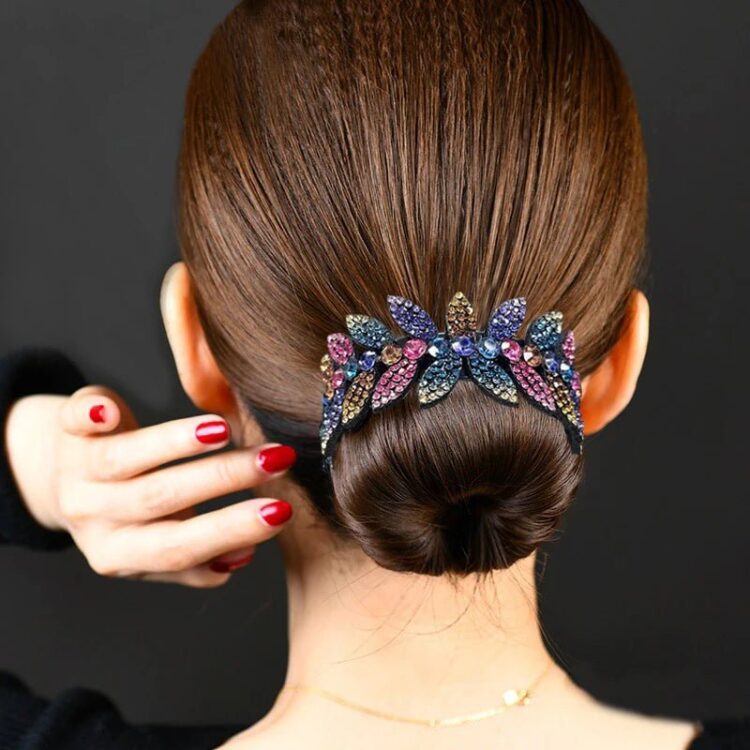
The French barrette is a refined hair accessory, handcrafted from acetate, leather, or metal. Designed for elegance and ease, it secures hair with a sleek clasp—ideal for chignons, half-up styles, or side sweeps. Often adorned with pearls, bows, or minimalist curves, it’s a staple in Parisian grooming. From couture ateliers to everyday chic, the barrette blends function with quiet sophistication.
Lace Cuffs
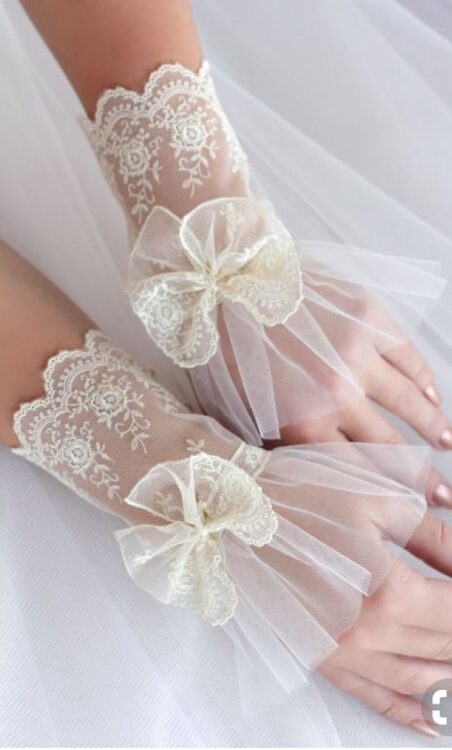
French lace cuffs add a poetic flourish to sleeves, echoing 18th-century court fashion. Made from Chantilly or Alençon lace, they were detachable accents for blouses, jackets, or gloves. Their scalloped edges and floral embroidery conveyed refinement and status. Today, they’re revived in avant-garde styling and bridal wear—offering a tactile nod to French craftsmanship and the art of subtle ornamentation.
Tulle Veil
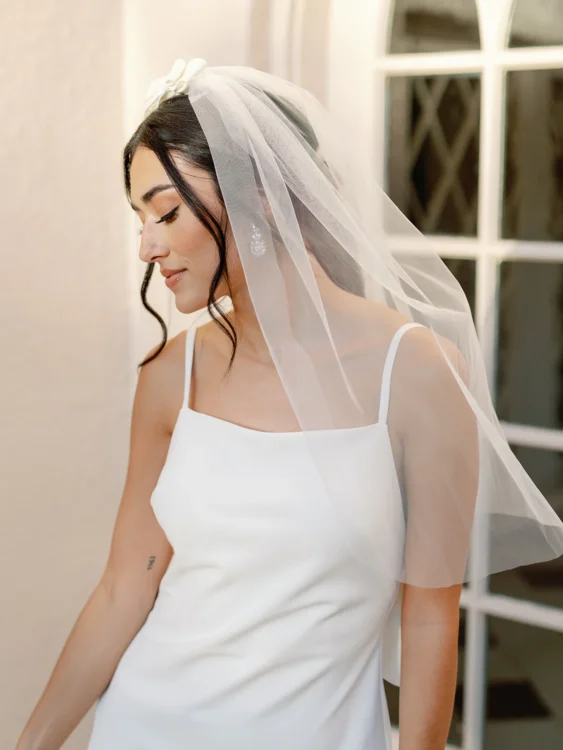
A French tulle veil is the epitome of bridal grace. Made from soft illusion or silk tulle, it drapes effortlessly over the face or shoulders. Often edged with Calais lace or dotted with pearls, it balances transparency with texture. Whether cathedral-length or fingertip, it evokes romance and tradition. French ateliers elevate the veil into a couture statement—timeless, ethereal, and deeply symbolic.
Richelieu Shoes
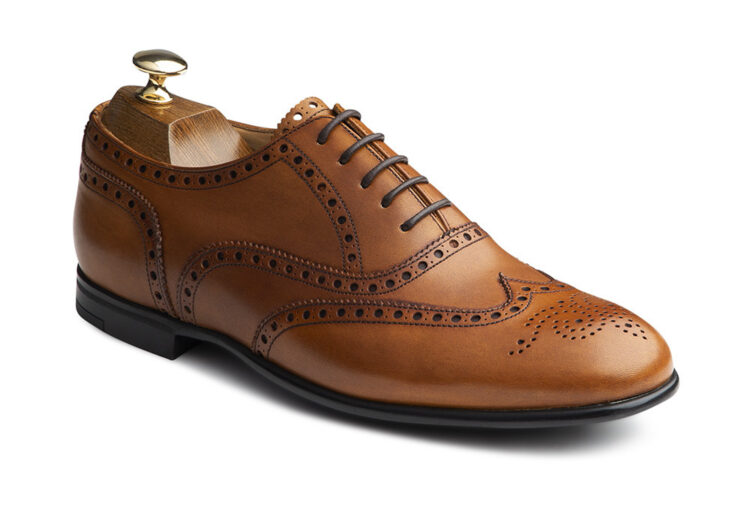
Sleek, low-heeled leather shoes with closed lacing and brogue-like perforations, often pointed-toed. Made of polished leather, their refined aesthetic suits men, unisex today, for formal settings. Named after Cardinal Richelieu in 17th-century France (per Versailles archives), they’re forerunners to British Oxfords. A haute couture staple, they influence global dress shoe trends. Worn for sophisticated occasions, Richelieus are a timeless choice for those valuing French aristocratic heritage and sharp, classic style.
Espadrilles:
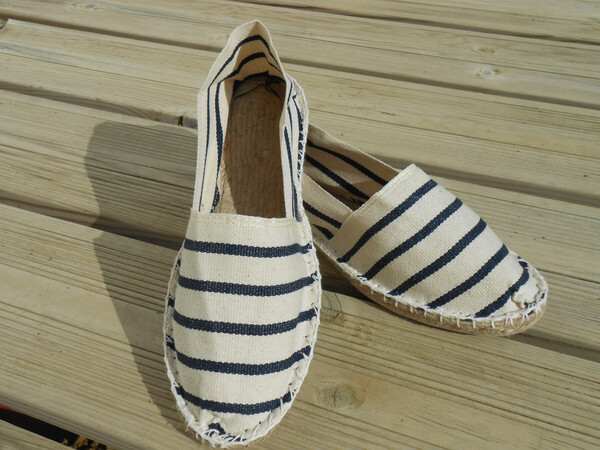
Flat, canvas shoes with a rounded toe and woven jute rope sole, sometimes with ankle-tie laces. Crafted from cotton or linen, their casual, summery aesthetic suits unisex wearers for leisure. Originating in the 13th-century French Basque region, as documented in Pyrenees folklore (e.g., Catalan museum records), they’re a French Riviera staple. In haute couture, they’re elevated with silk, influencing global casual footwear. Worn for relaxed elegance, espadrilles are a vibrant gift for those cherishing French coastal heritage.
Go-Go Boots
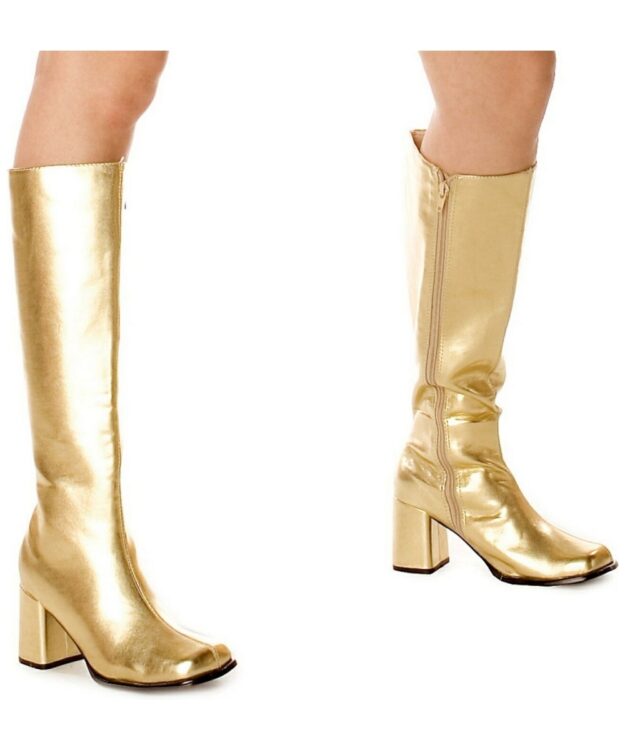
Knee-high or calf-length boots with a low, block heel, often rounded or square-toed, made of leather, vinyl, or patent leather. Their bold, mod aesthetic suits women, worn for dancing or fashion-forward outfits. Originating in 1960s France, popularized by André Courrèges, they epitomized youthful rebellion and Parisian chic. In haute couture, they’re reimagined in vibrant colors, influencing global retro trends. Worn for statement looks, go-go boots are a fun, iconic accessory for those embracing vintage French style.
Galoshes
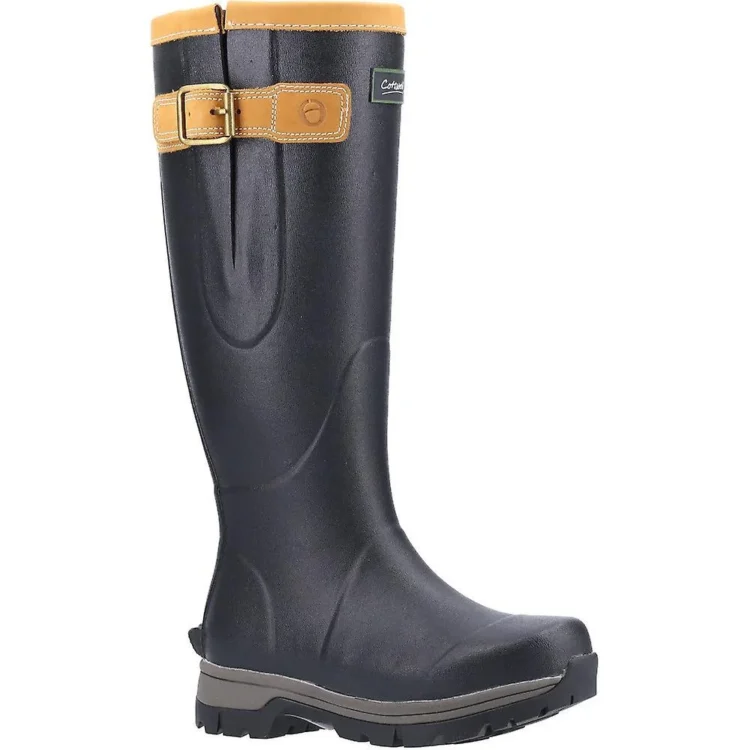
French galoshes evolved from Roman and Gaulish footwear into sleek, rain-ready overshoes. By the 19th century, they were essential for navigating Paris’s cobbled streets. Made from vulcanized rubber or polished leather, they protected delicate shoes while adding a utilitarian chic. French versions often featured tailored silhouettes and subtle detailing, blending practicality with understated style—especially popular among bourgeois men and fashionable flâneuses.
Charentaise Slippers
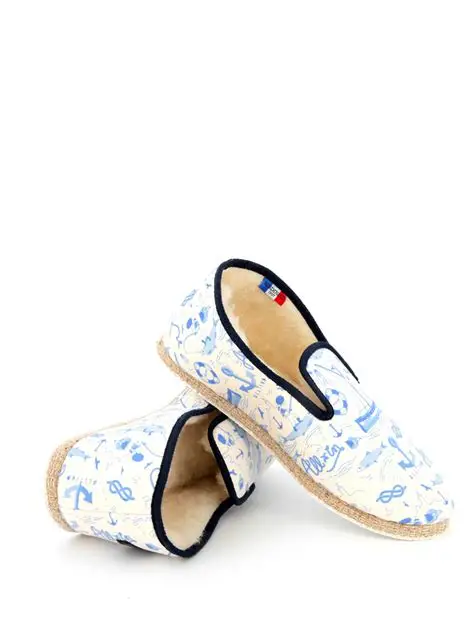
Soft, flat slippers with a rounded toe and felt or wool upper, often plaid or plain, lined with cozy shearling. Their rustic, comfortable aesthetic suits unisex wearers for home lounging. Originating in 17th-century Charente, France, they were crafted from wool scraps for warmth. In haute couture, they inspire luxurious loungewear. Their timeless coziness influences modern slipper designs, embodying French provincial charm. Charentaises are a cozy gift for those valuing relaxed, heritage-driven comfort.
Ballet Flats
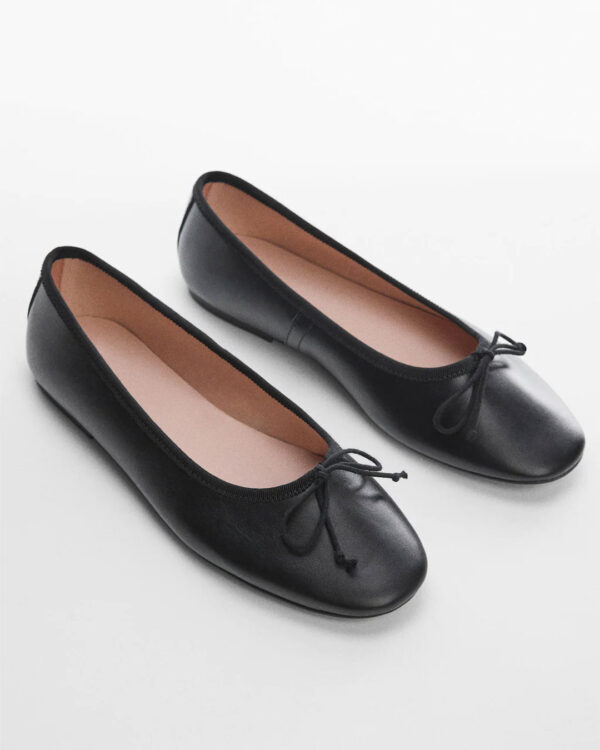
Flat, rounded-toe shoes with a low vamp, often featuring a small bow or embellishment, made of soft leather, satin, or canvas. Their minimalist, graceful aesthetic is primarily for women, embodying Parisian chic. Inspired by French ballet in the 19th century, they’re a haute couture staple for effortless elegance. Their versatile design influences global footwear trends, blending comfort with sophistication. Worn daily or for events, ballet flats are a timeless gift for those valuing practical yet stylish French fashion rooted in cultural heritage.
Sabot (Clog-Style Shoe)
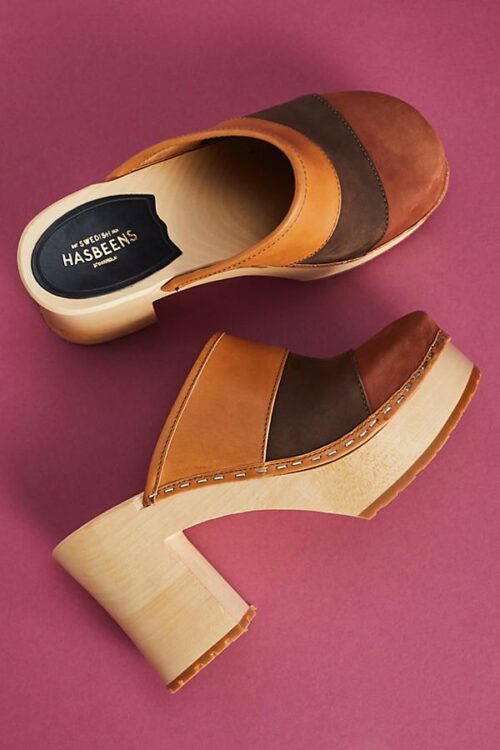
A chunky, open-back shoe with a wooden or leather sole and rounded toe, sometimes embroidered or studded. Its rustic, practical aesthetic is unisex, historically worn by French peasants. Originating in rural France, it’s reimagined in haute couture with luxurious materials. The sabot’s sturdy design influences modern clogs, blending utility with charm. Worn for casual or artistic looks, these shoes are a distinctive gift for those who appreciate French folk heritage and bold, comfortable footwear with a historical edge.
French jewelry, iconic items that define French Fashion.
French jewelry has long been a symbol of elegance, craftsmanship, and cultural storytelling. From regal cameo brooches and romantic lockets to the refined sparkle of Art Deco pieces, France’s contribution to jewelry design is steeped in artistry. French ateliers like those in Place Vendôme pioneered techniques that shaped global trends. In this section, we explore iconic French jewelry—not just luxury brands, but the heritage styles that define fashion in France..
Toi et Moi Ring
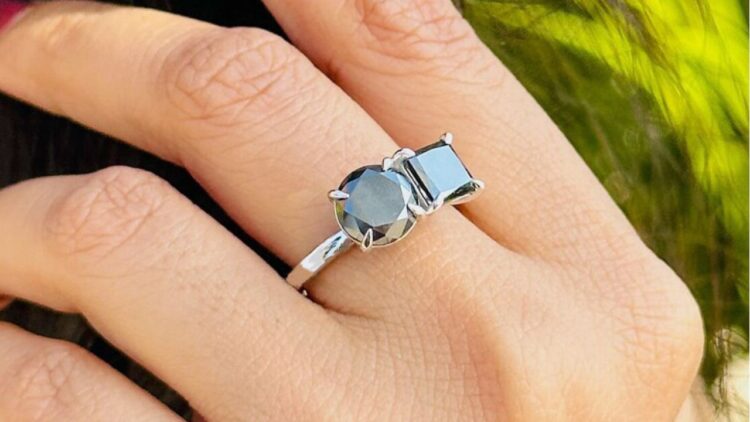
A romantic ring with two gemstones, often a diamond and sapphire, set side by side on a gold or platinum band, symbolizing love or duality. Its elegant, neoclassical aesthetic appeals primarily to women but suits unisex engagement styles. Originating in 18th-century France, popularized by Napoleon’s gift to Josephine, it embodies Parisian romanticism. In haute couture, its timeless dual-stone design showcases French artistry, influencing global engagement ring trends. Worn for its sentimental value, this versatile piece is a statement of enduring love and sophistication, perfect for heartfelt occasions. image source
Pompadour Necklace.
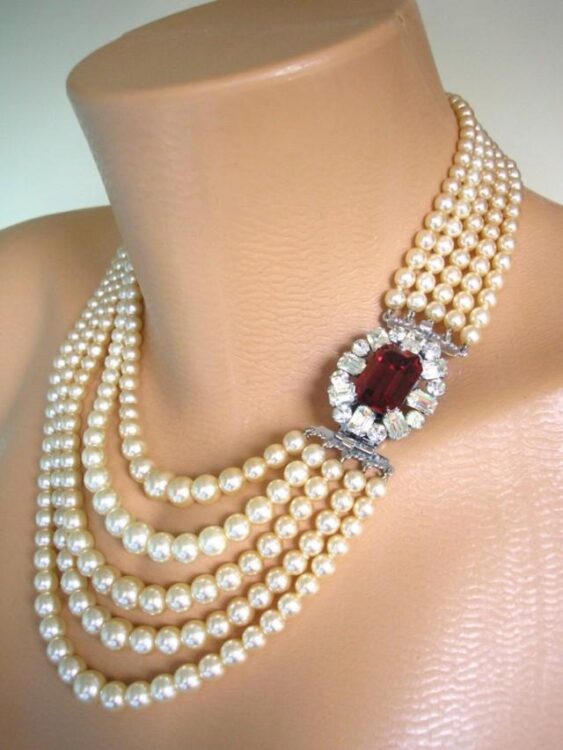
This regal choker or short necklace features a large marquise-cut gemstone, like a diamond or pearl, framed by intricate gold filigree or floral motifs, evoking 18th-century Versailles opulence. Primarily worn by women for formal elegance, its bold yet refined aesthetic reflects French courtly grandeur. Named after Madame de Pompadour, it’s a haute couture staple, showcasing France’s gem-setting mastery. Its dramatic design influences modern statement necklaces, symbolizing status and sophistication, making it ideal for gala wear or as a luxurious gift for those who cherish historical charm.
Cameo Brooch
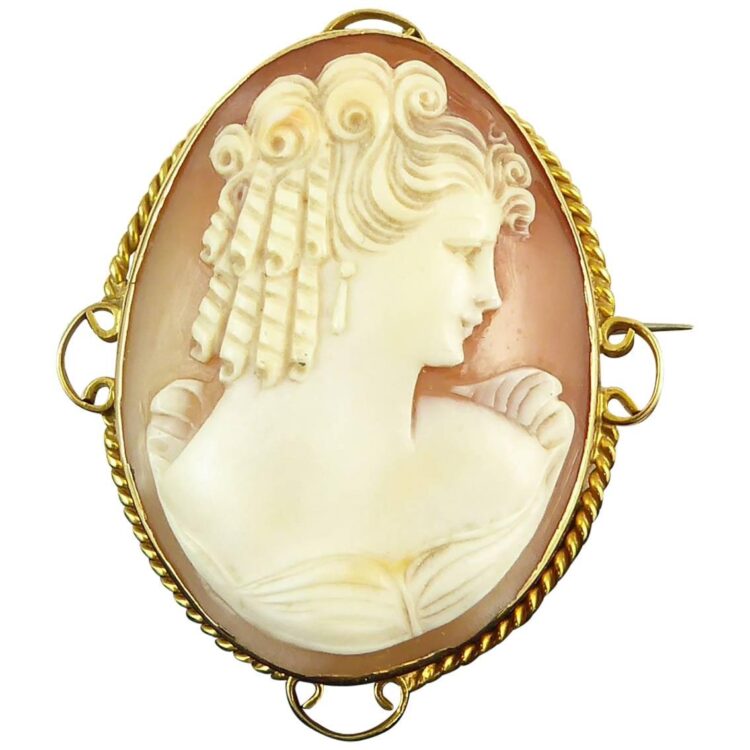
An oval or round brooch with a carved agate, shell, or onyx depicting a profile or mythological scene, set in gold or silver. Its vintage, narrative aesthetic suits unisex wear, especially for women and collectors. Popular in 19th-century France under Napoleonic neoclassicism, it’s a haute couture accent on gowns or lapels. The cameo’s storytelling quality, rooted in French artisans’ carving expertise, influences vintage jewelry trends. Worn as an heirloom, it carries personal history, making it a sentimental, artful gift for those who value craftsmanship and tradition.
Fleur-de-Lis Pendant
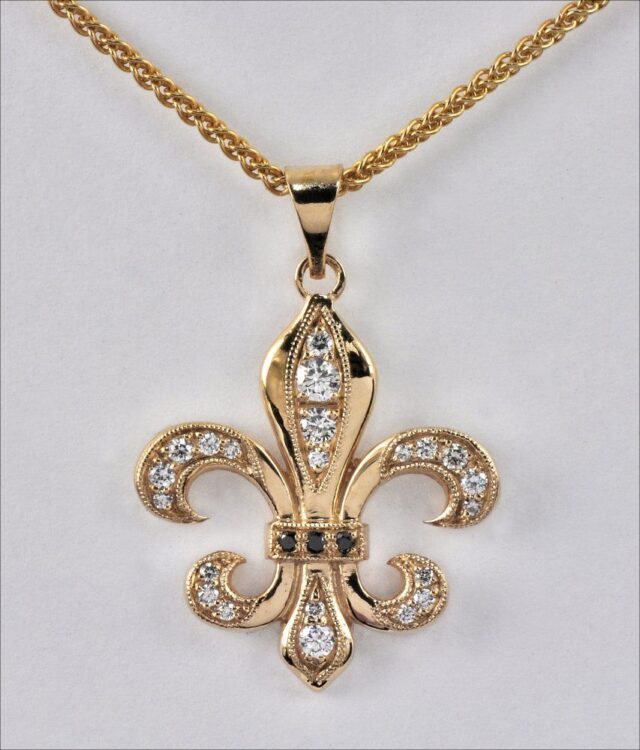
A stylized lily pendant with three petals, often flat or curved, crafted in gold, silver, or enamel with small gems, symbolizing purity and French heritage. Its heraldic, elegant aesthetic suits unisex wearers with cultural ties. Rooted in medieval French royalty, it’s a haute couture favorite for minimalist or ornate necklaces. The fleur-de-lis, an iconic French symbol, influences global jewelry with its timeless design. Worn for its historical significance, it’s a versatile gift for those who appreciate subtle sophistication and French identity.
Parure Set
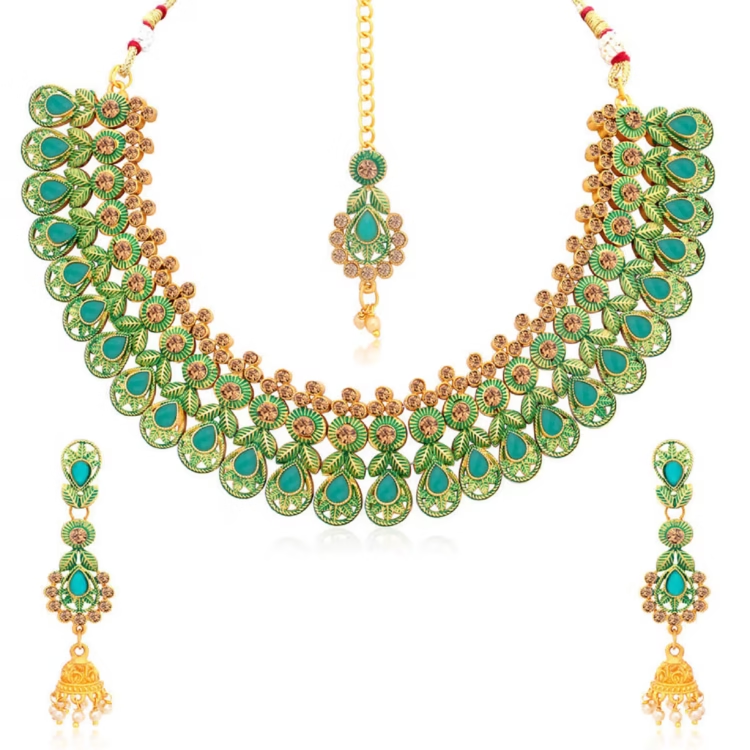
A matching jewelry set—necklace, earrings, bracelet, sometimes a brooch or ring—featuring cohesive motifs like pearls or filigree in gold or gems. Its grandiose, harmonious aesthetic is primarily for women at formal events. Popular in 18th-century French courts, parures reflect France’s coordinated elegance, a haute couture staple for galas. Their unified design influences modern jewelry sets, embodying French luxury. Worn for grandeur, this set is a luxurious gift for those seeking sophisticated, cohesive adornment, showcasing meticulous craftsmanship and historical prestige.
Lavalier Pendant
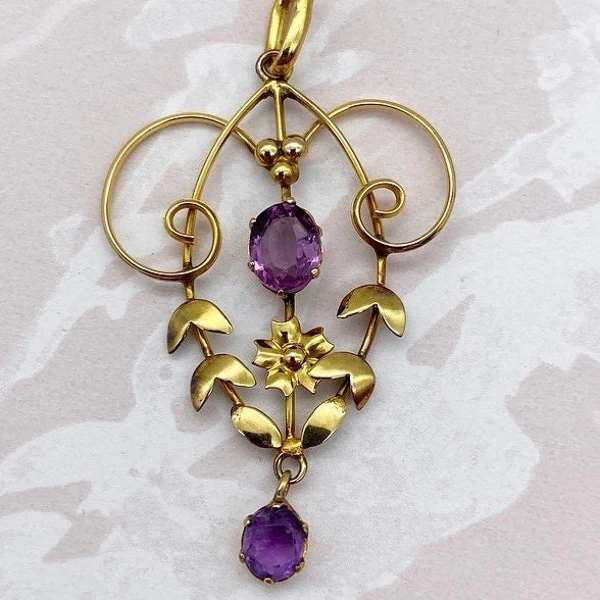
A delicate gold or silver chain with a single dangling pendant, often a pearl, diamond, or locket, accented by smaller drops. Its romantic, feminine aesthetic is primarily for women, ideal for romantic or daily wear. Named after Louise de La Vallière in 17th-century France, it’s a haute couture accent for gowns, influencing minimalist pendant trends. Its personalizable nature, like lockets, adds sentimental value. This understated, elegant piece is a thoughtful gift for those who cherish intimate, historically inspired jewelry with French charm.
Croix Jeannette (Joan of Arc Cross):
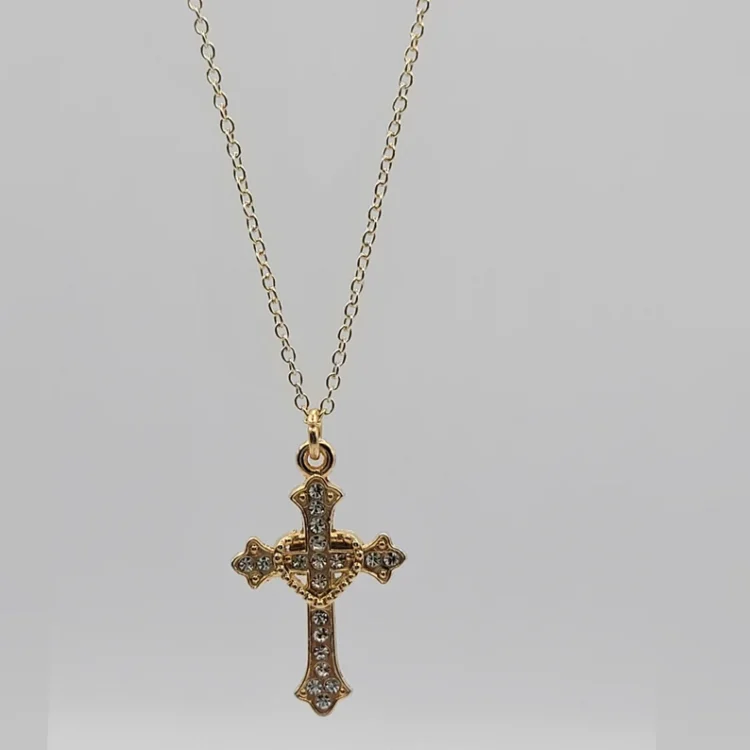
A rustic, rectangular or flared cross pendant in silver, bronze, or gold, often oxidized for a weathered look, symbolizing faith. Its spiritual, humble aesthetic suits unisex wearers with religious or historical ties. Inspired by Joan of Arc and medieval French tradition, it’s a subtle haute couture accent. Its simplicity influences modern spiritual jewelry, reflecting France’s Catholic heritage. Worn for its resilience and meaning, this cross is a meaningful gift for those valuing history and understated, symbolic adornment.
Poissarde Earrings
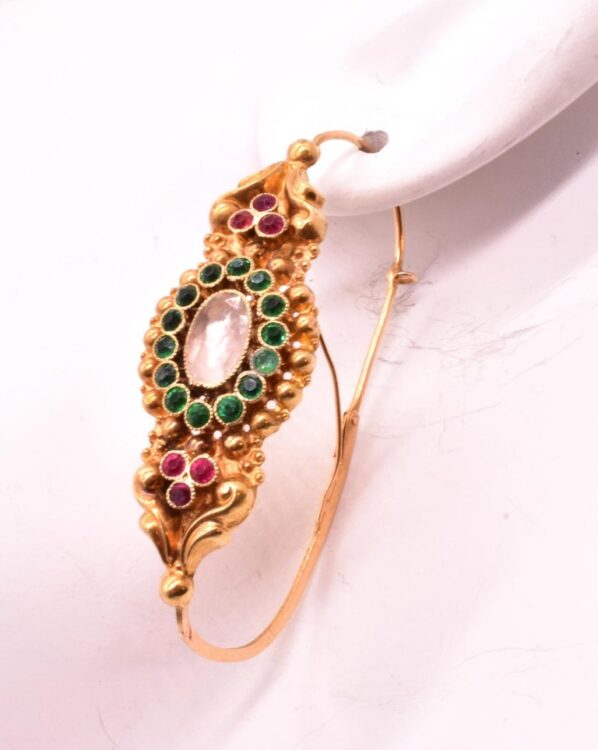
Oval gold hoops with an S-shaped “fish hook” spacer, often adorned with filigree, enamel, or gems like paste, are lightweight and neoclassical. Primarily for women, historically worn across classes, they reflect revolutionary simplicity. Originating post-1789 in Paris, named after fishwives, they’re a haute couture staple. Their democratic history influences modern hoop trends, showcasing France’s ability to elevate humble origins. Comfortable and versatile, these earrings are a chic, story-driven gift for those who appreciate historical significance and effortless elegance.
Bague au Firmament (Starlit Ring)
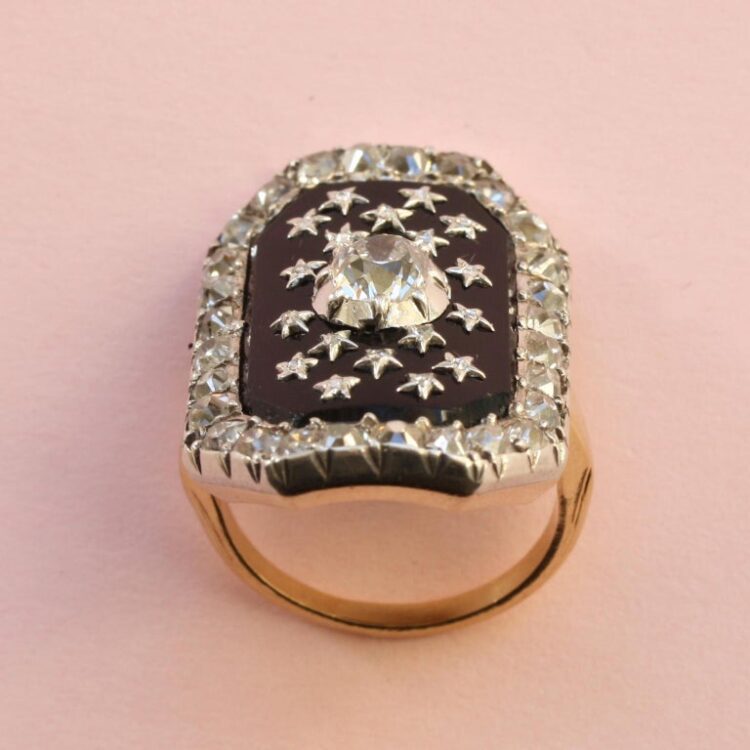
A domed gold band or central sapphire with scattered diamond or gold “stars,” evoking a night sky. Its poetic, romantic aesthetic suits women and unisex artistic wearers. Born in 19th-century Romantic France, inspired by literature and astronomy, it’s a whimsical haute couture piece. Its celestial design influences modern starry jewelry, reflecting French creativity. Worn for its dreamy allure, this ring is a unique gift for romantics or those who cherish imaginative, story-driven accessories with historical depth.
Croix de Camargue Pendant
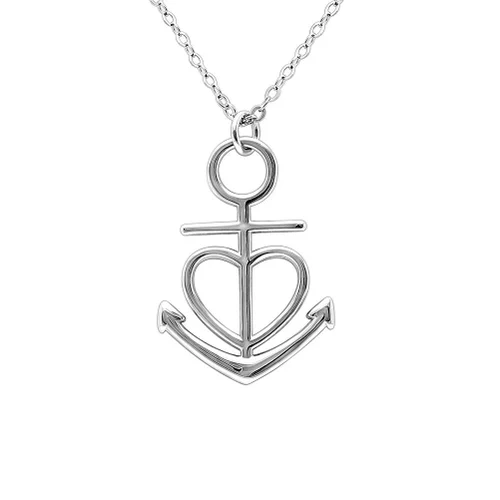
A compact silver or gold cross with an anchor base and heart top, symbolizing faith, hope, and charity. Its rustic, symbolic aesthetic suits unisex wearers with Provençal or spiritual ties. Created in 1924 in Camargue, it reflects southern France’s cowboy culture, a subtle haute couture charm. Its unique symbolism influences talismanic jewelry, showcasing regional diversity. Worn for cultural pride, this pendant is a thoughtful gift for those valuing meaningful, understated pieces with French heritage.
Dormeuse Earrings
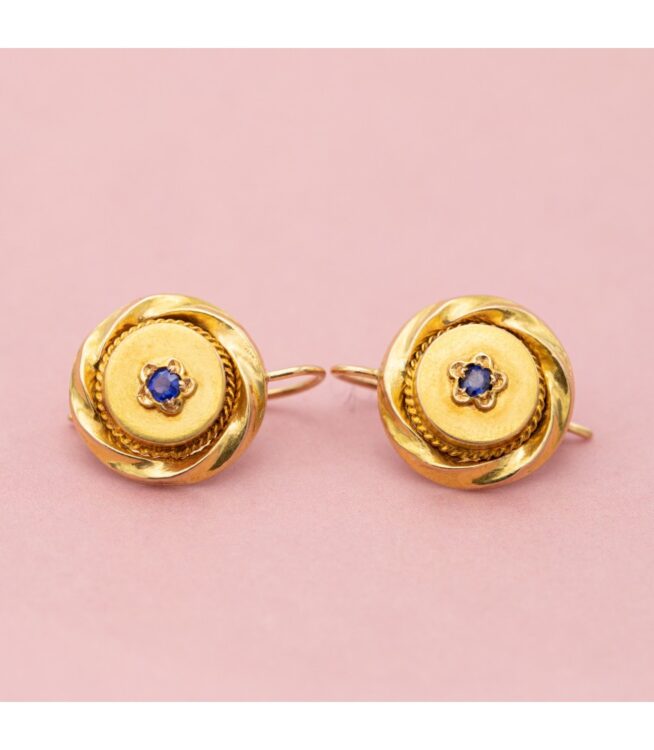
Small gold, silver, or pearl studs with screw-back or hook closures, designed for comfort during sleep. Their minimalist, glamorous aesthetic is primarily for women seeking daily elegance. Popular in 18th-century France, they reflect practical luxury, a haute couture accent for day-to-night looks. Their simplicity influences modern stud trends, embodying Parisian chic. Worn for effortless sophistication, these earrings are a versatile, low-maintenance gift for those who value timeless, understated French style with historical roots.
Trinity Ring
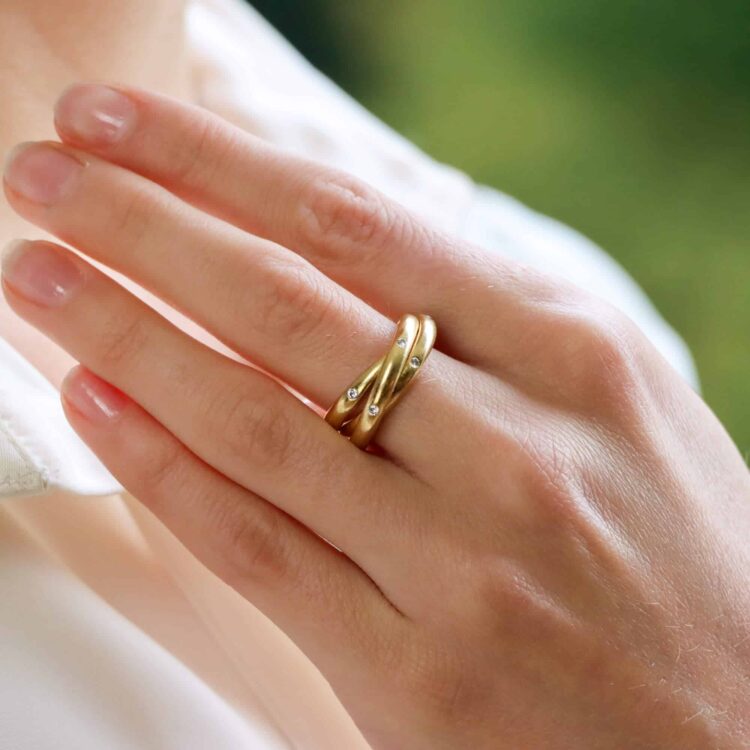
Three interlocking bands, typically in gold, rose gold, and white gold, sometimes with diamond accents, forming a sleek, cylindrical shape. Its minimalist, symbolic aesthetic suits unisex wearers, often for commitments or friendships. Created in 1924 France, inspired by unity and love, it’s a haute couture icon. The interwoven design reflects French innovation, influencing global multi-band ring trends. Worn for its timeless versatility, this ring is a meaningful gift for those valuing modern elegance and symbolic depth, embodying France’s knack for blending simplicity with profound meaning.
The Entremblant Brooch
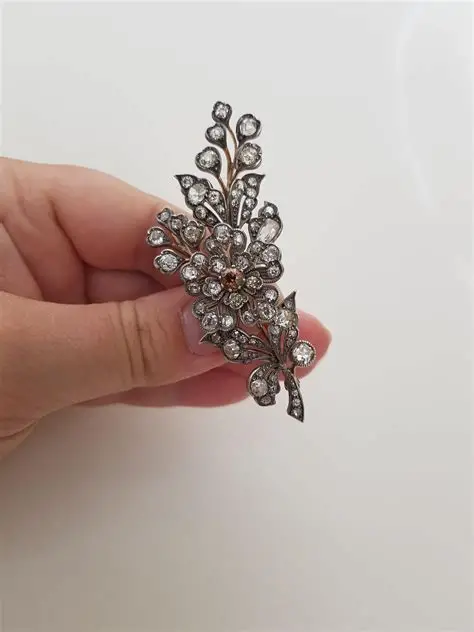
A decorative pin with floral or insect motifs, like blossoms or butterflies, mounted on fine wire springs to tremble when worn, crafted in gold or silver with diamonds, pearls, or colored gems. Its dynamic, scintillating aesthetic is primarily for women, enhancing eveningwear with opulent charm. Originating in 18th-century France to sparkle under candlelight, it’s a haute couture statement piece, showcasing intricate French craftsmanship. Its kinetic design influences modern movement-inspired jewelry, reflecting France’s legacy of luxurious innovation. Worn for formal occasions, this brooch is a dazzling gift for those who cherish historical elegance.
Baroque Pearl Drop Earrings
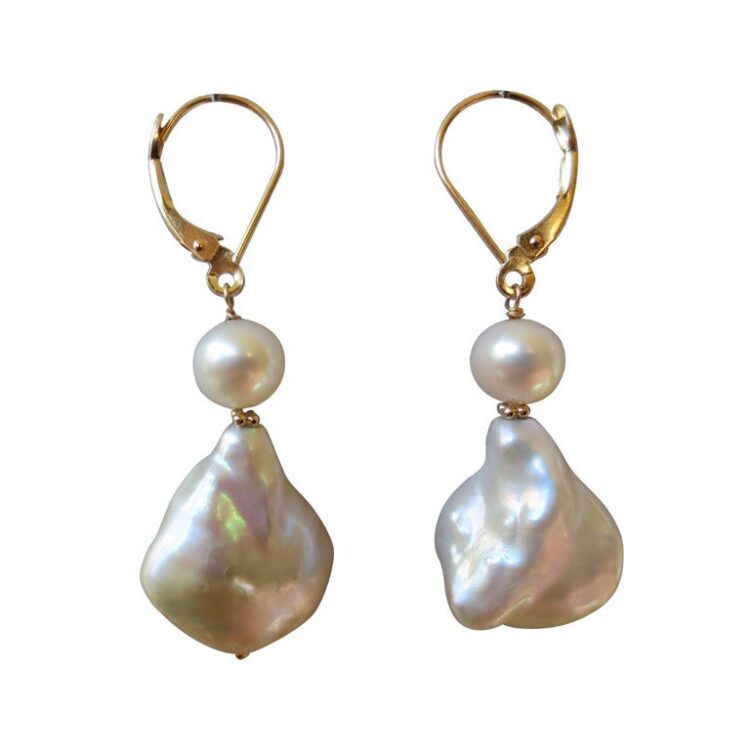
Baroque pearl drop earrings feature irregular, asymmetrical pearls suspended from delicate metal settings—often gold or silver. Their organic shapes reflect light in unique ways, making each pair one-of-a-kind. Typically worn by women, they add elegance to both casual and formal looks. The structure includes a stud or hook with a dangling pearl, celebrating natural beauty and French artistry with a modern, sculptural twist.
Sautoir Necklace
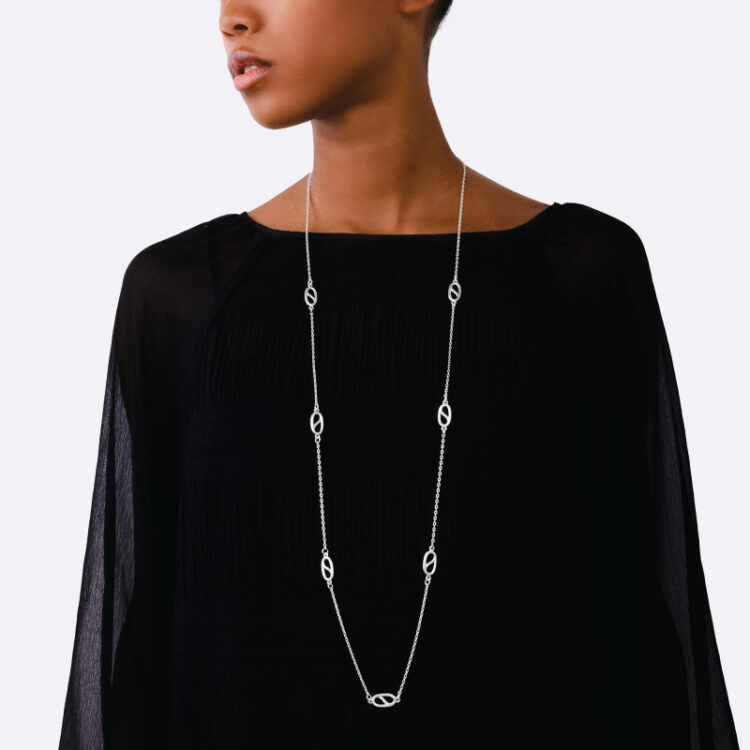
A sautoir is an elongated necklace—often opera-length or longer—crafted from pearls, beads, or fine chains. It typically ends in a tassel or pendant, adding movement and drama. Popularized in early 20th-century France, especially during the Art Deco era, it’s worn draped or looped for versatility. Though traditionally feminine, modern sautoirs are unisex, blending vintage charm with contemporary styling. Materials range from silk cord to gold and gemstone embellishments.

